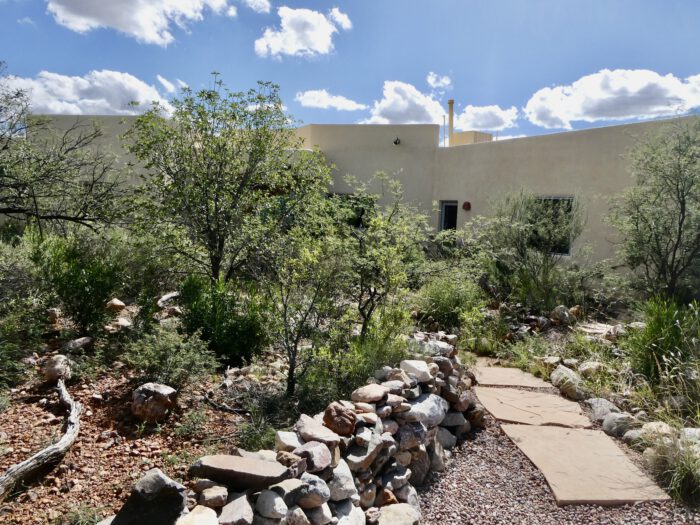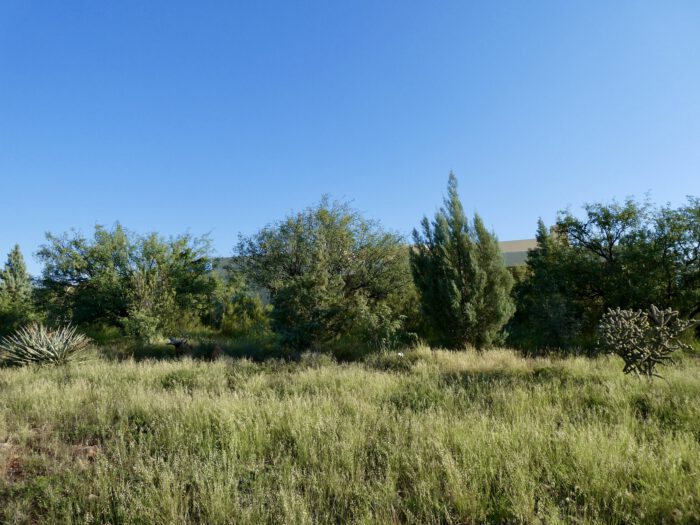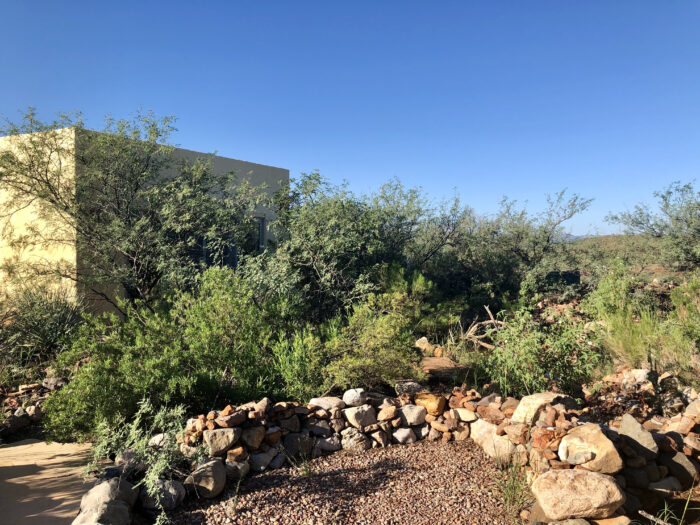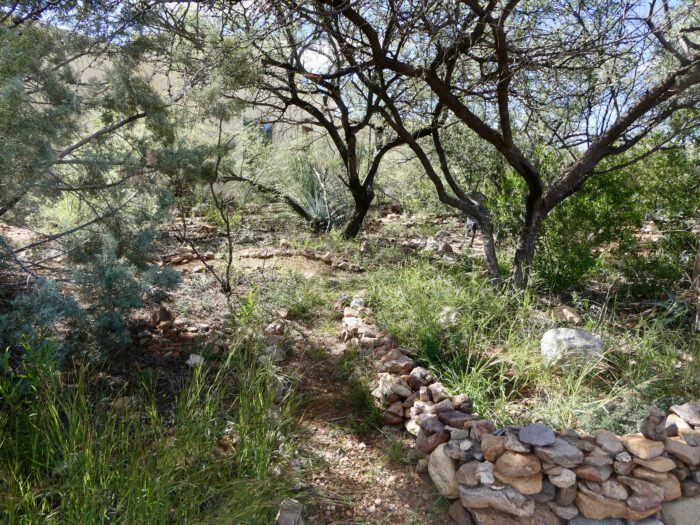2008 ORIGINAL LANDSCAPE
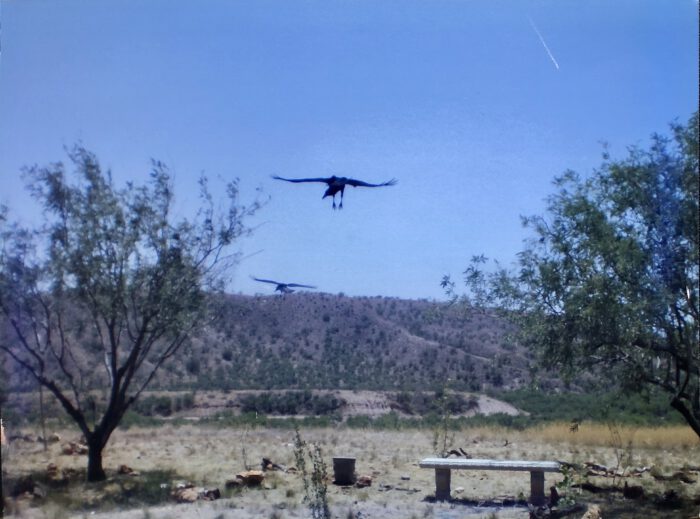
After 8 long months of searching for just the right combination of house and acreage in the Sky Islands, in March 2008 it was clear to Vincent and Claudia that this property had great ecological potential due to it’s strategic location in the heart of the Sky Islands. Despite the fact that both the house and the land were in urgent need of maintenace and hands-on stewardship, Vincent knew that the biodiversity at the would-be preserve was world-class. Hence, from day one, Vincent and Claudia have been committed to a relentless, hands-on ecological restoration strategy . Together, they have lovingly stewarded every square inch of the house and the land, enacting an awesome transformation of every aspect of their 42-acre property.

Vincent passionately worked towards his Nature Sanctuary – a vision honoring our unique biodiversity via determined and disciplined sustainable Land Management strategies, Habitat Restoration and Conservation practices. Many different projects occured in parallel – including the creation of 6 miles of Nature Trails , establishment of Organic Orchards and Edible Gardens , constructing numerous Wildlife Ponds, curating Vincent’s Natural History Museum -in the original horse barn- transforming it into the Sky Islands Discovery Center. etc. Claudia led the key and ongoing renovations at the house, the horse barn, and designed, participated and oversaw the creation of the Sky Islands Safari Camp.
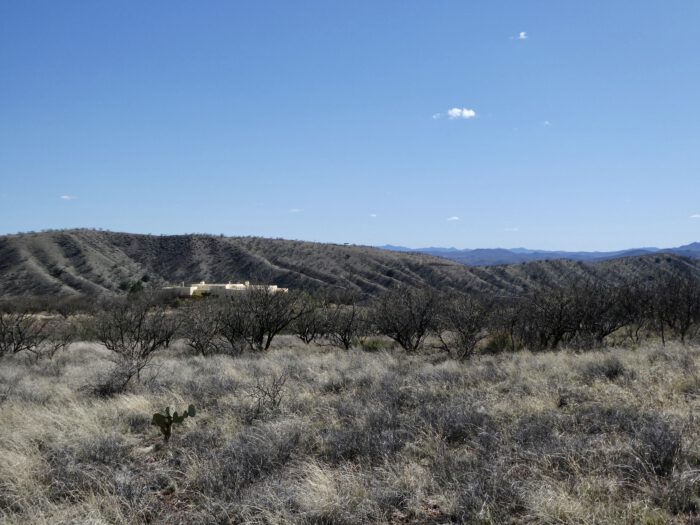
Vincent and Claudia have been determined to create a Wildlife Sanctuary, conserving the world-class and unique Sky Islands Biodiversity at their 42-acres. Their hard work and dedication since March 2008 has converted the property into their beloved Nature Sanctuary – enhancing wildlife species populations, boosting environmental health and fostering ecological diversity at Raven’s Nest and beyond for generations to come.
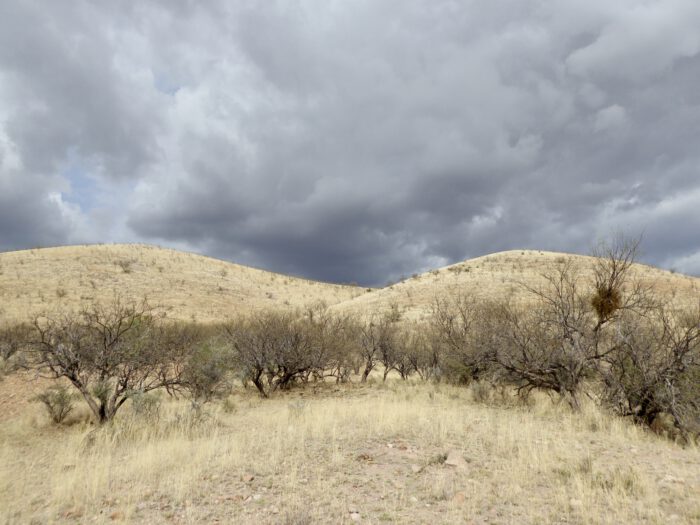
2008 ORIGINAL HOUSE
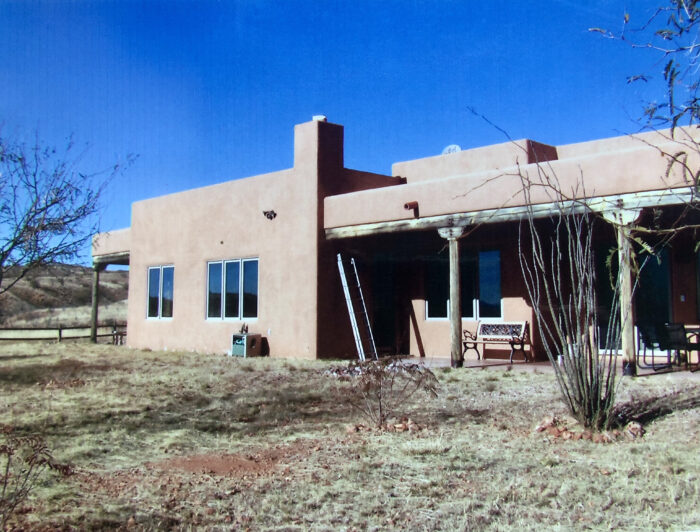
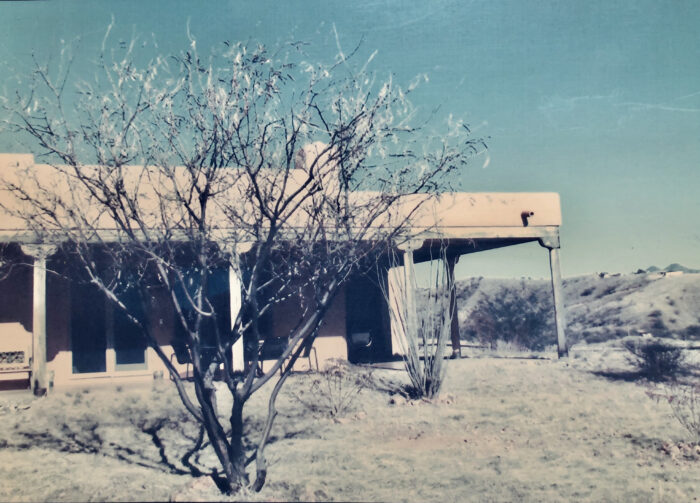
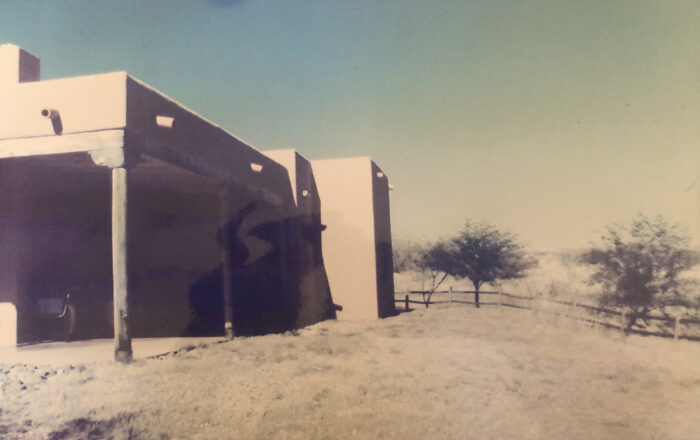
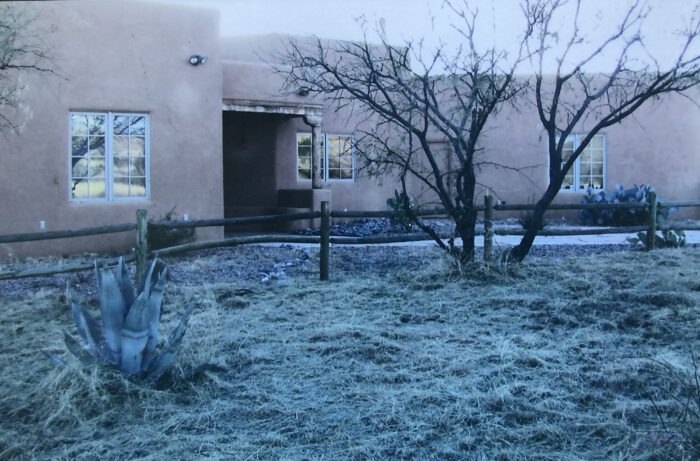
Upon arrival the most glaring deficiency in both habitat and biodiversity was directly around the house itself. Unfortunately, it was evident that the previous owner had an aversion to plants and an addiction to weed-wacking in all directions around the structure. Therefore, the botanical starting point vis a vis the terrain surrounding the home was a veritable moonscape, repeatedly weed-wacked into austere submission. Hence the urgent need for Vincent’s Earth Stewardship expertise, applied to the land in the form of hands-on ecological restoration.
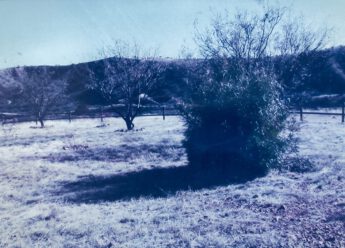
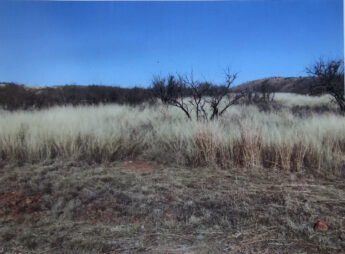
Few plants grew around the house and many of those that did were nonnative species that could easily overrun the rest of the preserve over time. Unfortunately, the very few species that the last owner had planted were several exotic tree species known to escape from backyards and into the landscape at large – African Sumac and Chilean Mesquite. These were soon on our “hit-list” along with riffs of nonnative Tumbleweed, Lehmann’s Lovegrass, Bermuda Grass, Natal Grass, and others. Left to their own devices, these species from foreign lands might well overwhelm and dominate the native vegetation at Raven’s Nest.
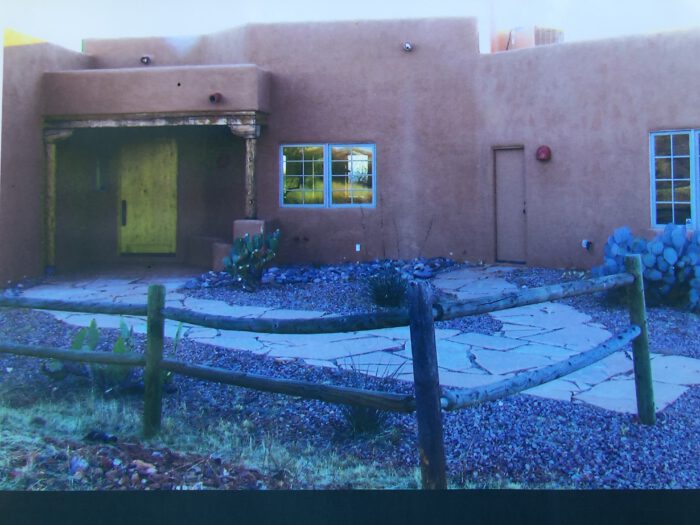
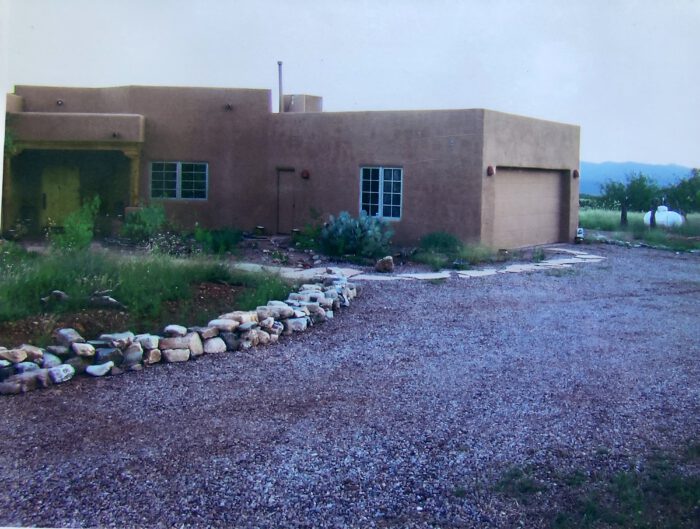
Needless to say, the gauntlet was set down. From the get-go Vincent and Claudia made a long-term commitment to try to eradicate the nonnative plants via ecologically friendly practices that included hand-pulling non-native species and using them as mulch for native species. Simultaneously, Vincent planted hundreds of native plants of dozens of local species around the house and other existing structures. Vincent and Claudia were determined to transform the lunar look circumnavigating their house with one that supported biodiversity. With “plant it and they will come” as their motto, their hard work had begun in earnest! Their loving dedication from 2008 – 2025 is reflected in the breathtaking transformation they have accomplished together. Enjoy the amazing and inspiring Tour below!
2008 – 2025 ECOLOGICAL RESTORATION
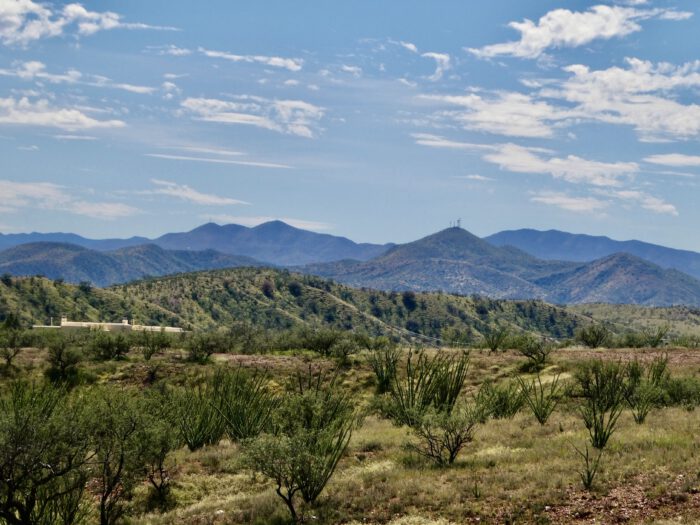
Non-Native / Invasive Species Removal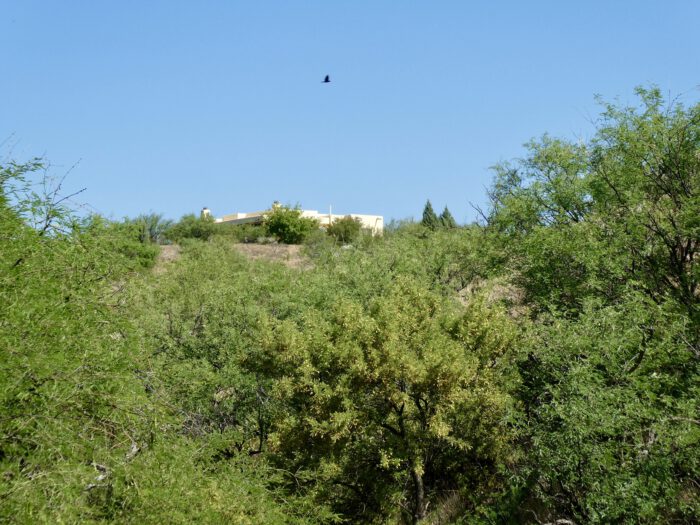
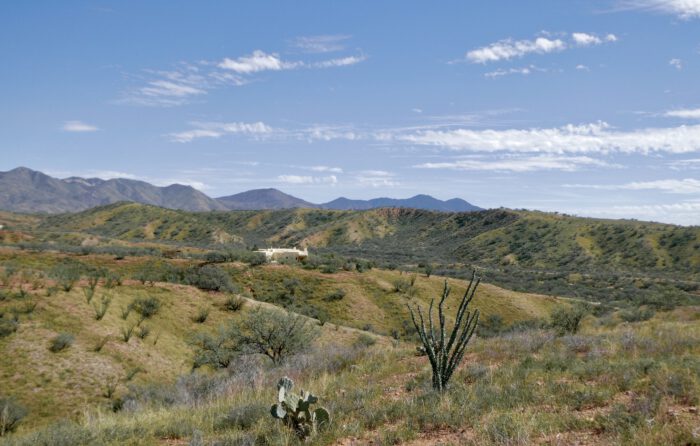
Upon arrival at Raven’s Nest Nature Sanctuary Vincent led an aggressive hands-on removal strategy of the non-native grasses that threaten the Sky Islands, such as Lehman’s Lovegrass, Bermuda Grass, and Natal grass – all originally from southern Africa. In accordance with our ongoing Conservation Practices at Raven’s Nest Nature Sanctuary, we reuse many of those non-native dried grasses as mulching around our native plants and at the organic orchards and edible gardens, but only when they lack viable seeds.
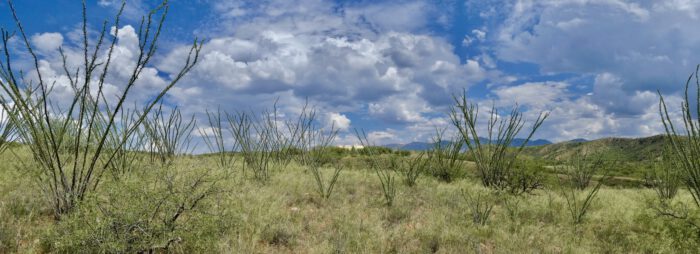
Additionally, Vincent aggressively removed Tumbleweed, which came from the steppes of Asia as well London Rocket, originally from Eurasia. Left unchecked, these non-native plants can quickly become invasive and take over the landscape, crowding out native plants and wildlife while decreasing the overall biodiversity.
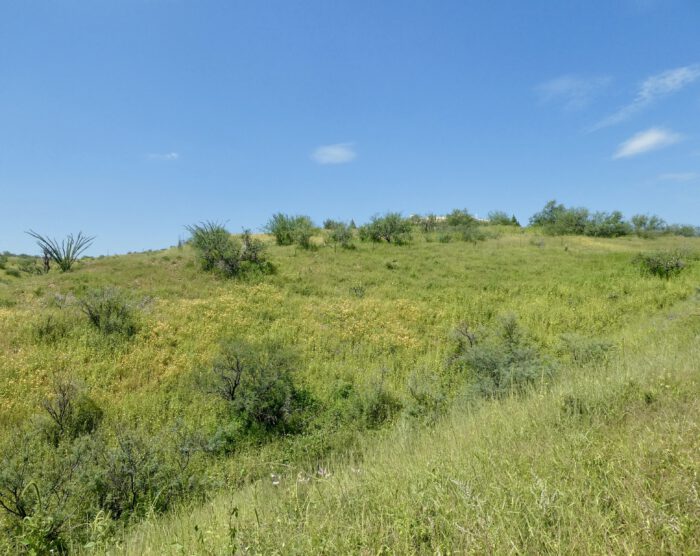
Since 2008 Vincent’s determination and persistence have been key to a resounding success wiping out non-native plants. Vincent’s repeated pulling of the offending plants in the same area over multiple years has led to the most rewarding result – native flora recolonizing the site and thus increasing the biodiversity of native plants at the preserve. This in turn has fostered a greater diversity of wildlife in a positive ecological cascade. 
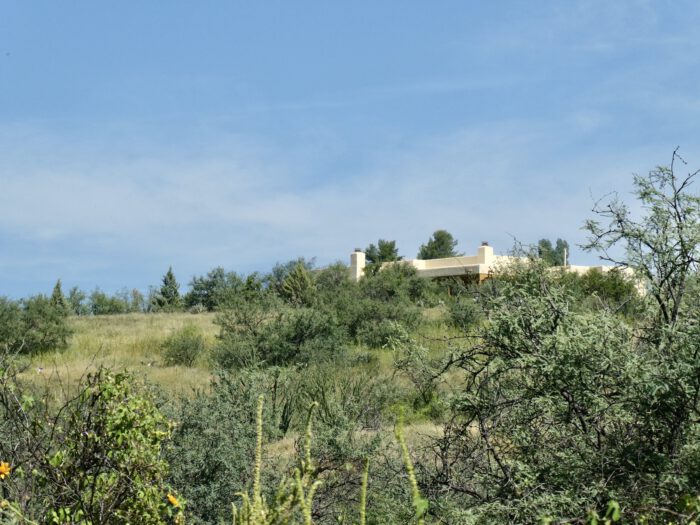

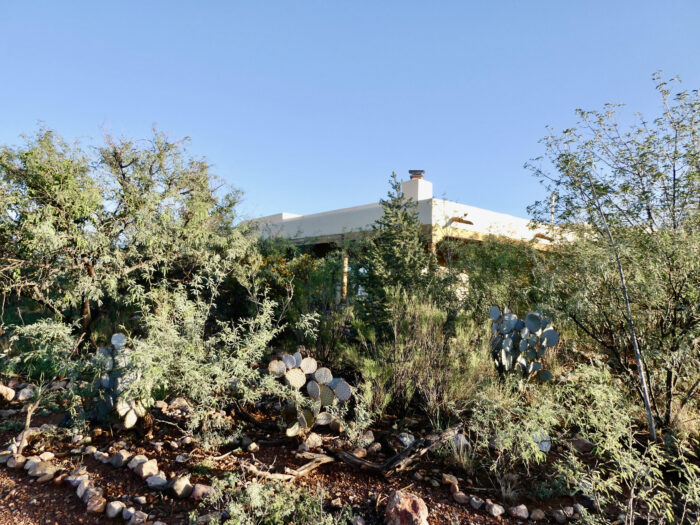
PLANTING NATIVE SPECIES
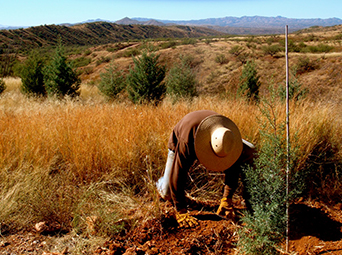
The hard clay soil proved no easy nut to crack, but soon Vincent’s efforts were paying off. As a professional Ethnobotanist, Vincent wanted to create an Edible, Medicinal, and Useful Landscape surrounding the house. Therefore, every native species he planted has important human uses. Some species provide food, others herbal medicine, while select plants produce parts useful for rope, tools, soap, aromatherapy, and other uses. Additionally, all of the species listed below support native pollinators – either as a larval food source, as a source of nectar, or in some other capacity. Thus, countless species of insects, butterflies in particular, as well as dashing Hummingbirds of various species are a common sight around the house – all in response to Vincent’s ecological restoration efforts. Vincent lovingly planted each species with xeriscaping principles in mind. He created swales for each species, heavily applied mulch in the ground and atop it, and created countless windbreaks with both rocks and logs. His final touch was a custom-made soaker hose system that delivers water efficiently, greatly helping to conserve it. The transformation of the landscape and al of its biota are in spectacular evidence everywhere throughout the preserve.
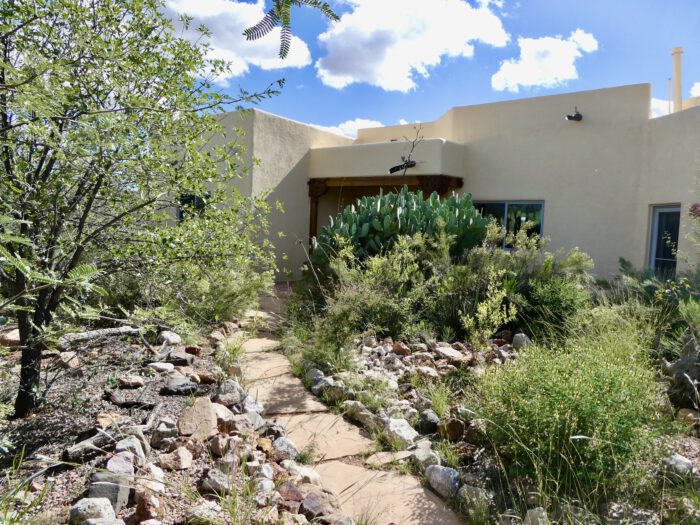
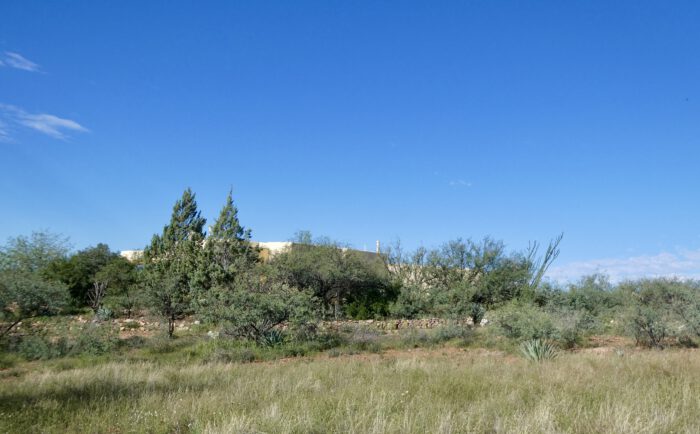
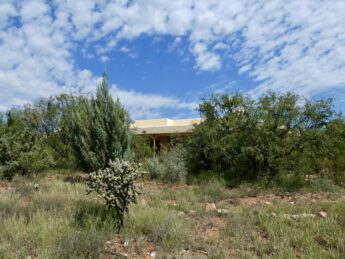
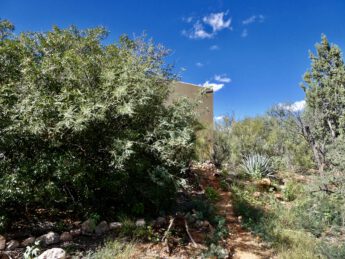
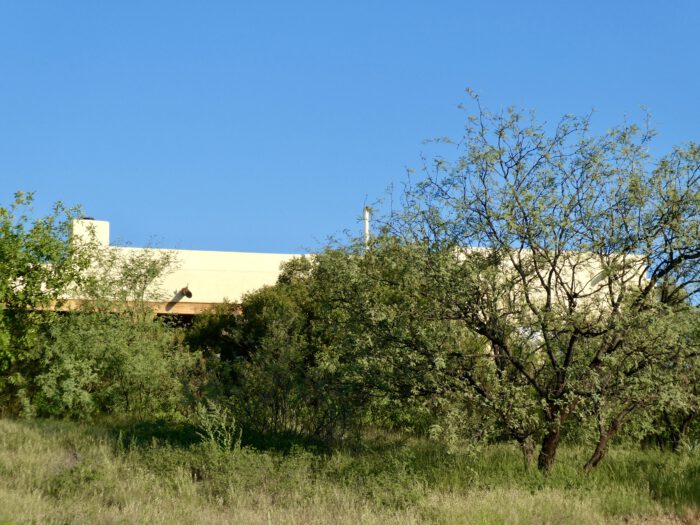
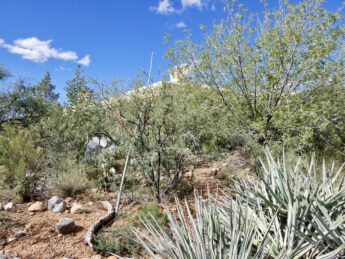
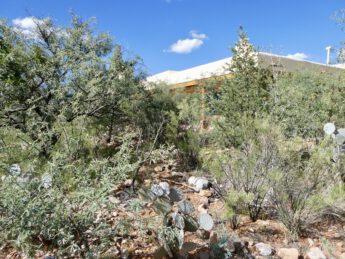
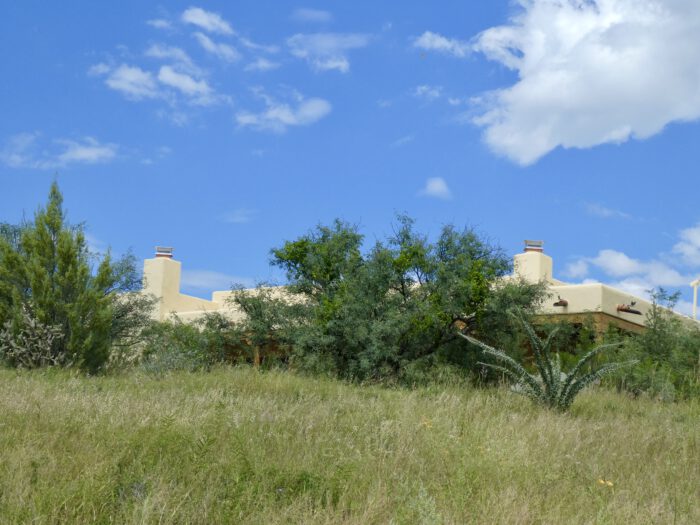
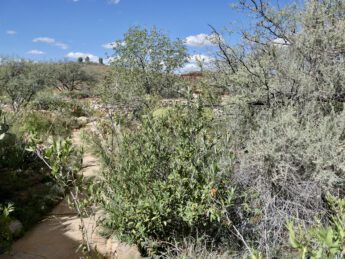
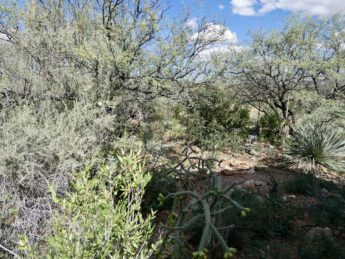
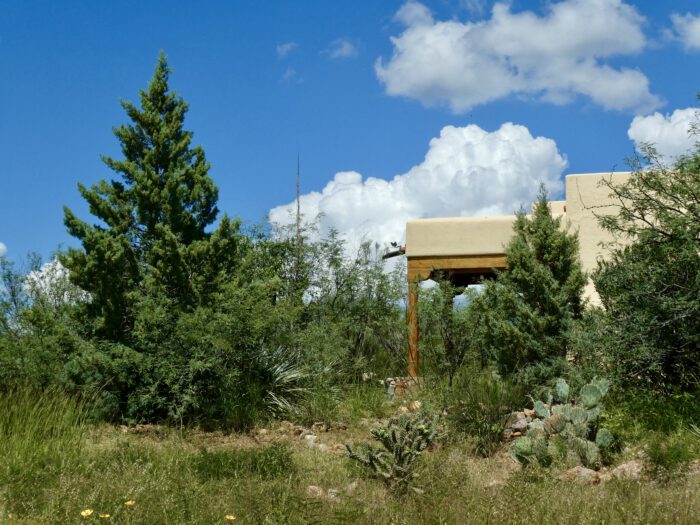
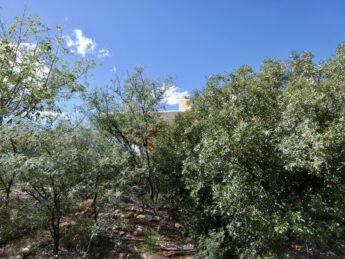
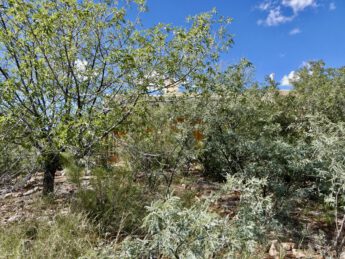
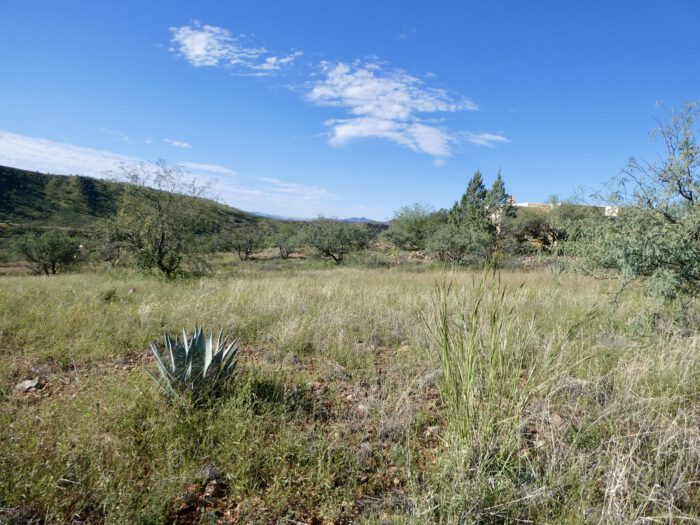
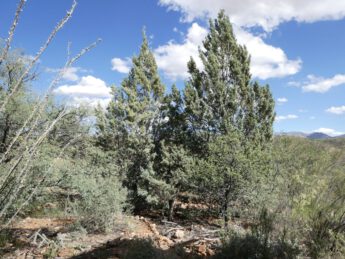
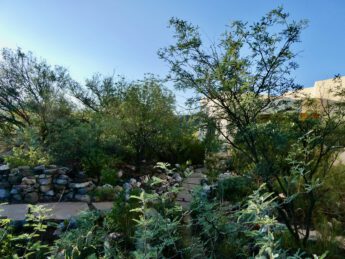
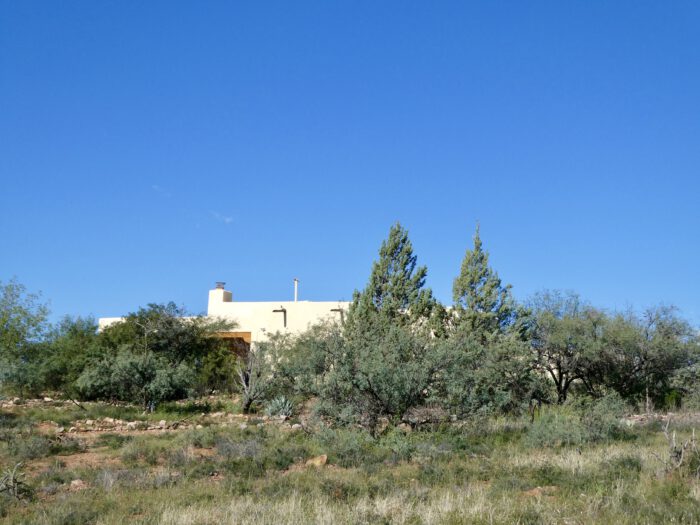
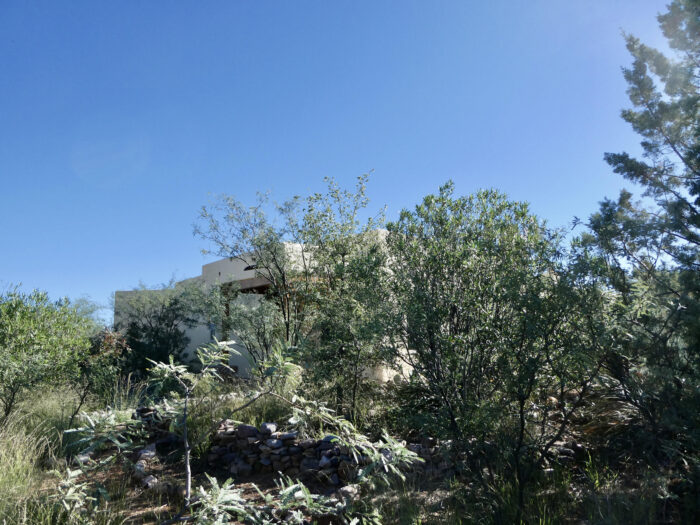
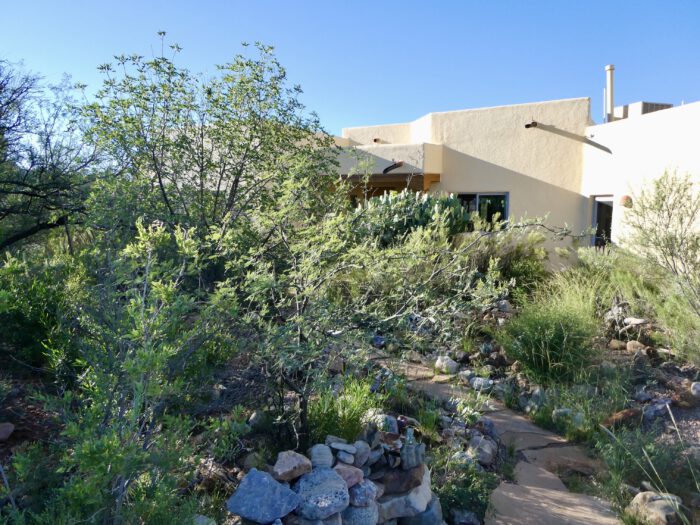
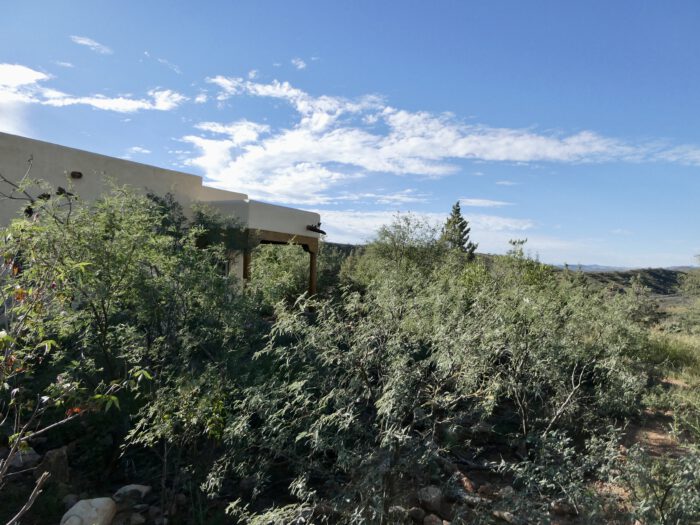
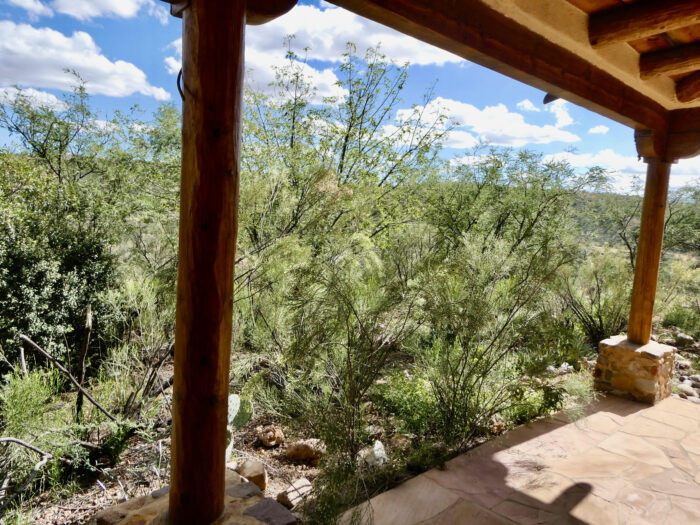
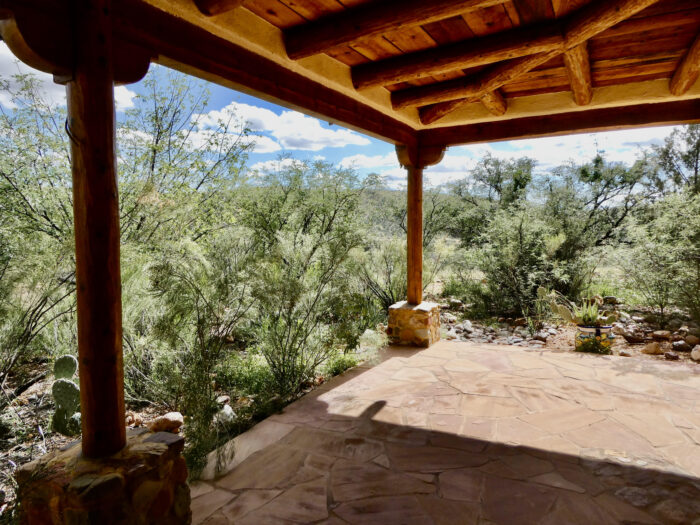
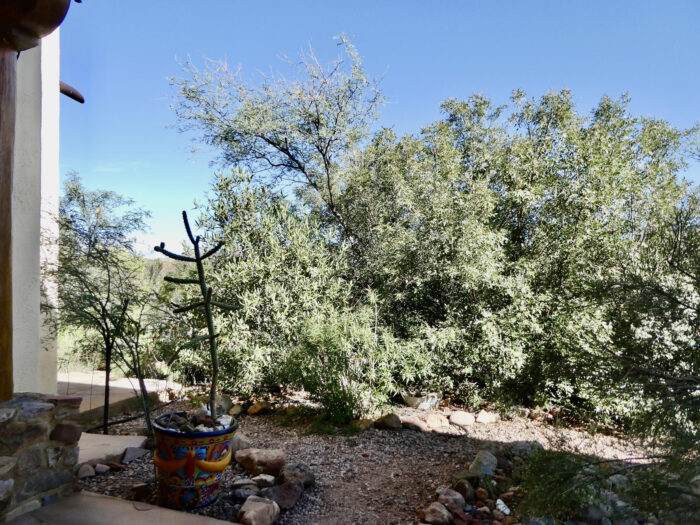
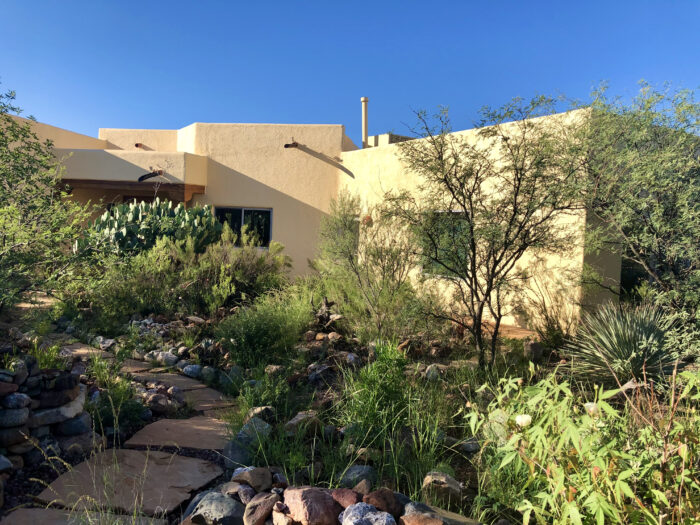
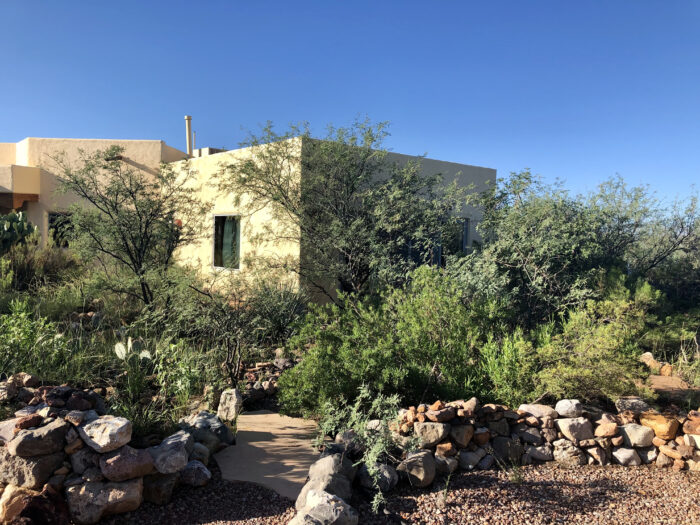
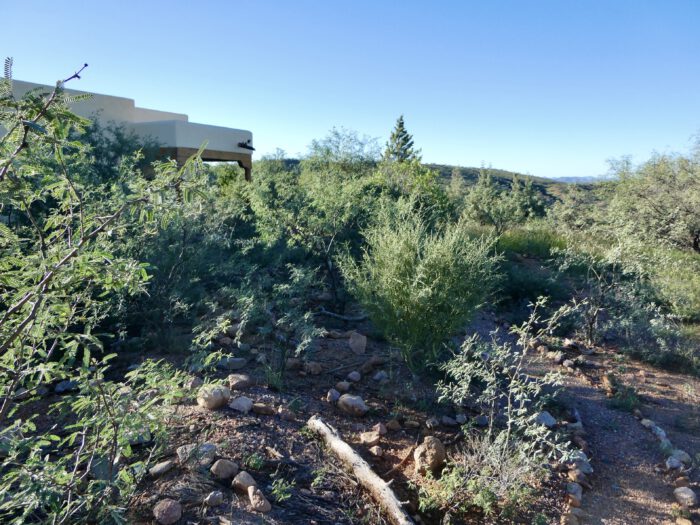
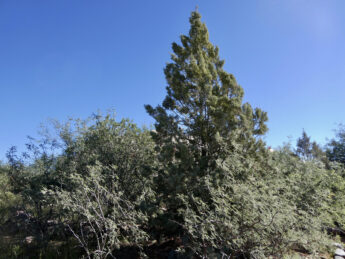
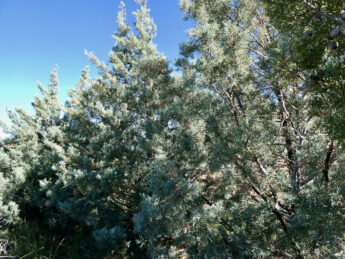
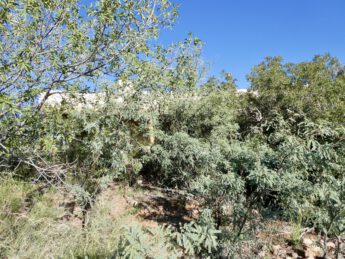
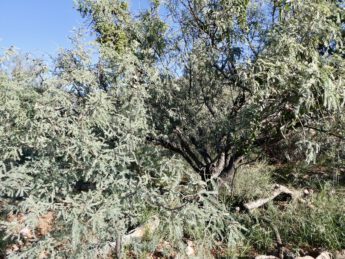
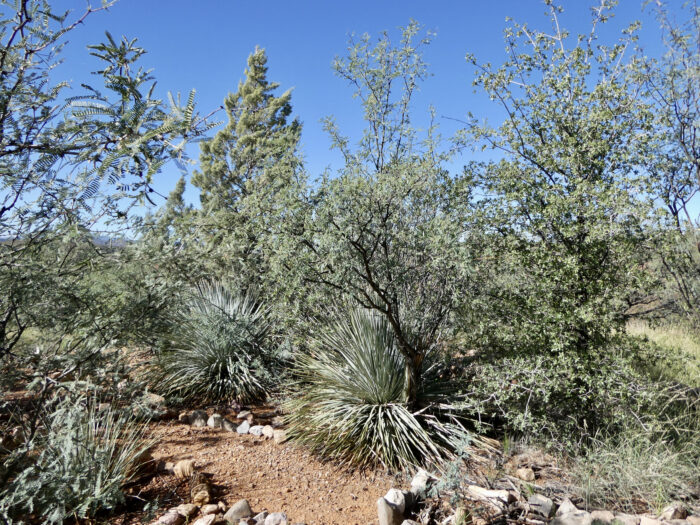
Trees
- Arizona Cypress
- Arizona Juniper
- Velvet Mesquite
- Whitethorn Acacia
- Foothills Paloverde
- Arizona Rosewood
- Netleaf Hackberry
- Spiny Hackberry
- Mexican Pinyon
- Western Kidneywood
- Velvet Ash
- Evergreen Sumach
- Emory Oak
- Scrub Oak
- Western Soapberry
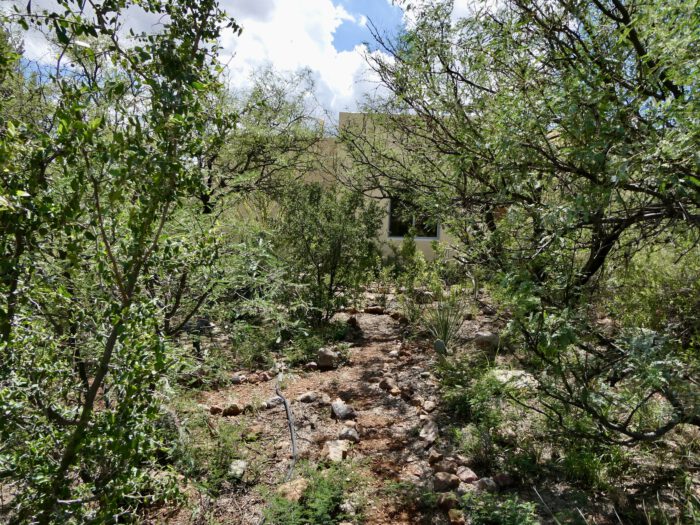
Shrubs
- Hopbush
- Desert Broom
- Dalea
- Fairy Duster
- Desert Senna
- Desert Honeysuckle
- Wild Cotton
- Greg’s Salvia
- Bricklebush
- Mariola
- Four-wing Saltbush
- Catclaw Mimosa – 2 species
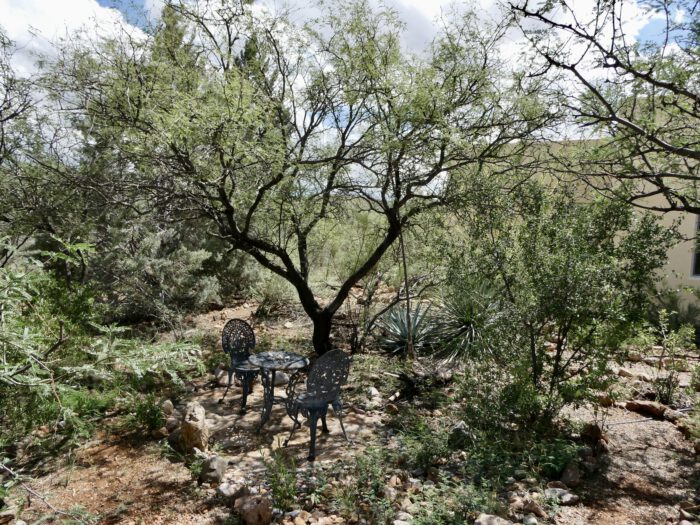
Succulents
- Sotol
- Hesperaloe
- Palmer Agave
- Banana Yucca
- Engelmann’s Prickly Pear
- Santa Rita Prickly Pear
- Cane Cholla
- Fishhook Barrel Cactus
- Pancake Mammalaria
- Rainbow Cactus
- Arizona Spinystar
- Bolivian Cilantro
- Ocotillo
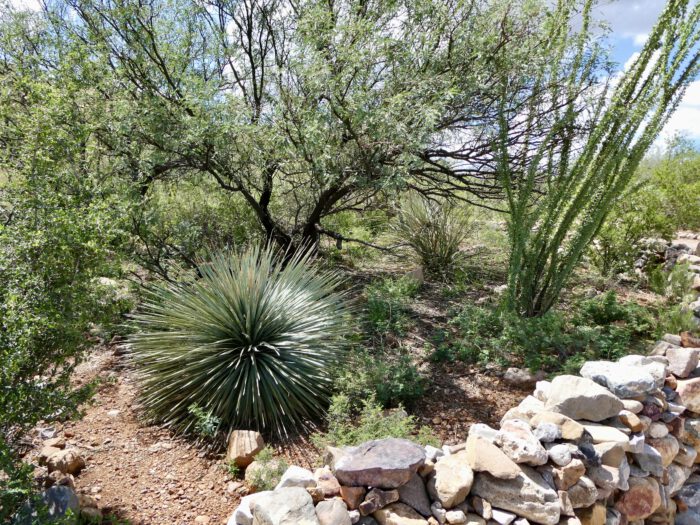
Vines
- Loco Melon
- Clematis
- Arizona Grape Vine
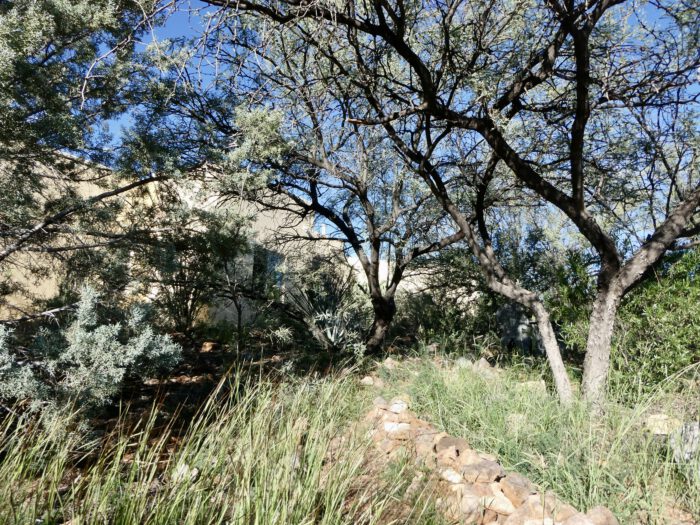
Grasses
- Sideoats Grama
- Plains Bristlegrass
- Bulbous Panic Grass
- Cane Beardgrass
- Tanglehead
- Spidergrass
- Green Sprangletop
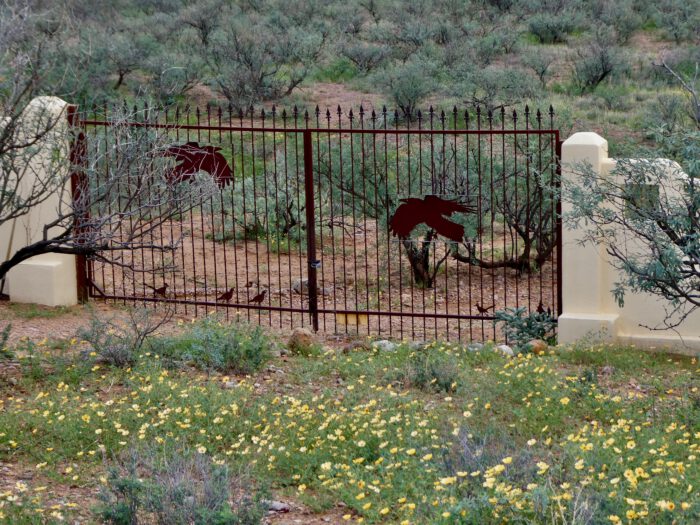
Wildflowers
- Papago Lilly
- Mariposa Lilly
- Tansy Mustard
- Desert Chicory
- Wire Lettuce
- Abutilon
- Summer Poppy
- Trailing Windmills
- Silverleaf Morning Glory
- Orange Flameflower
- Purple Spine Aster
- Silver Puffs
- Saya
- Spreading Fleabane
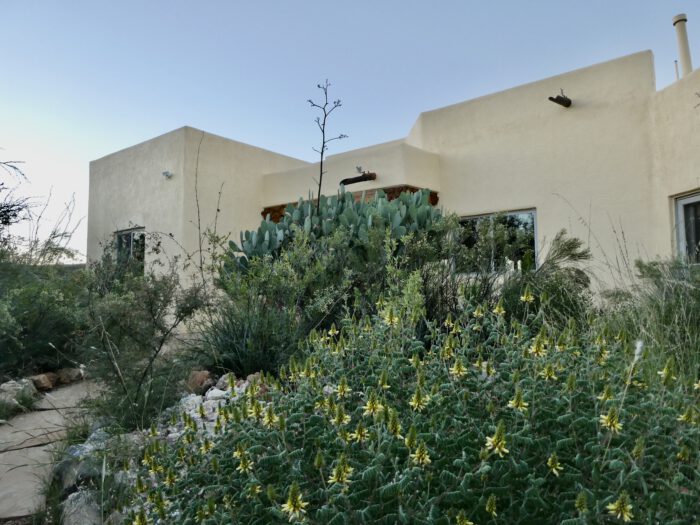
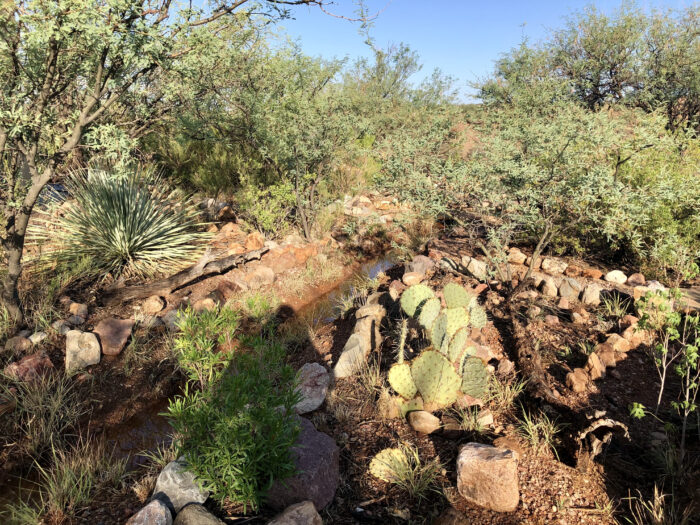
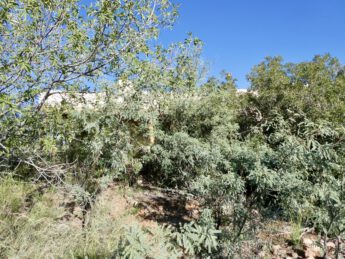
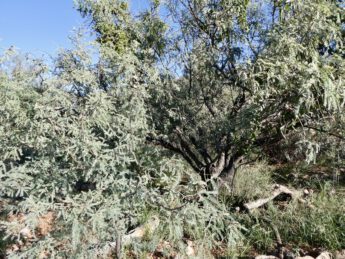
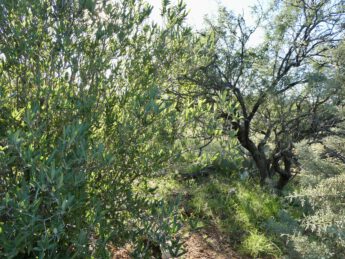
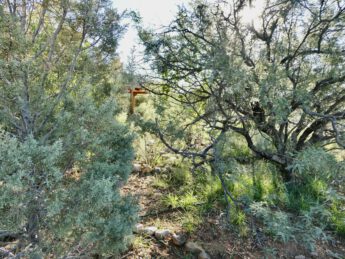
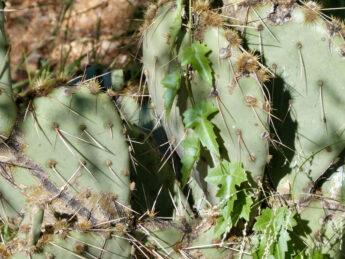
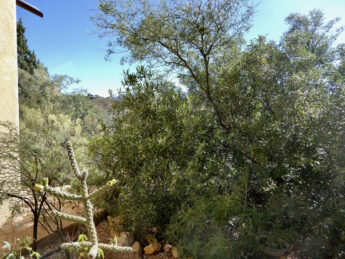
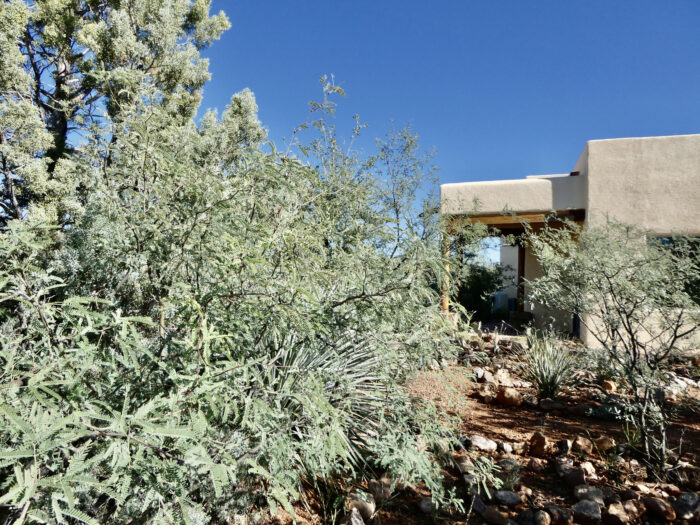
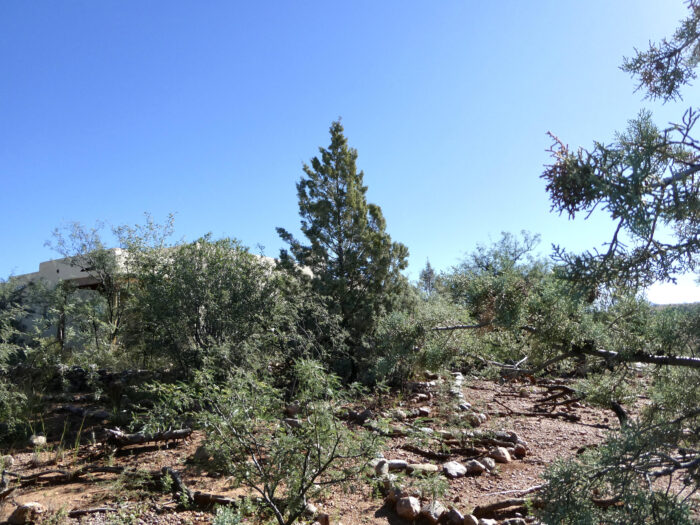
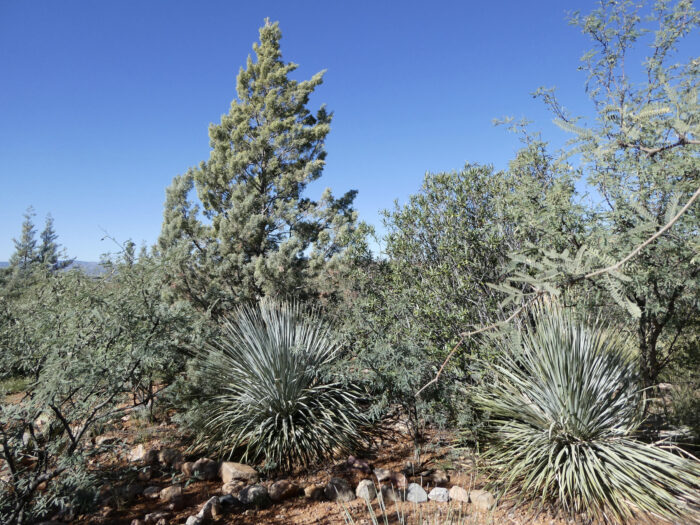
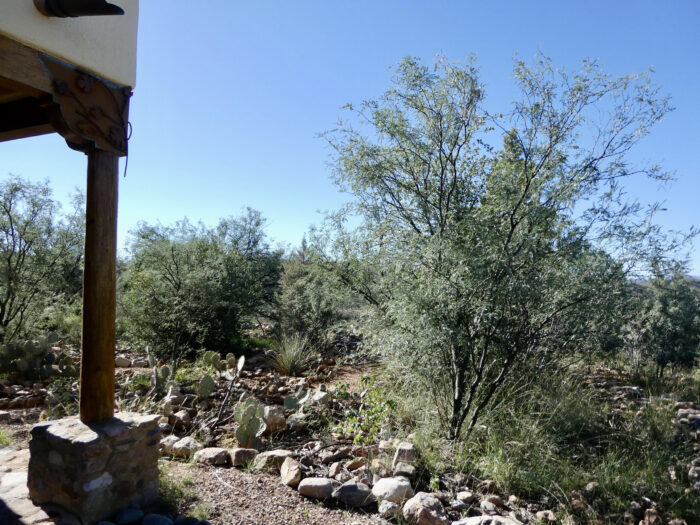
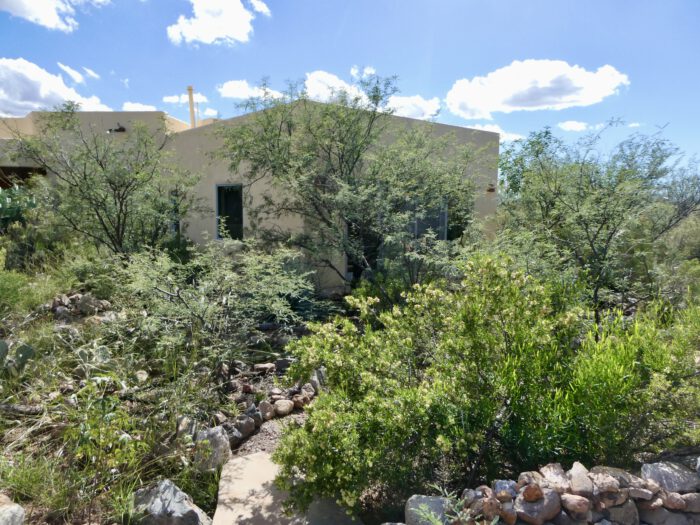
ROCK WALLS
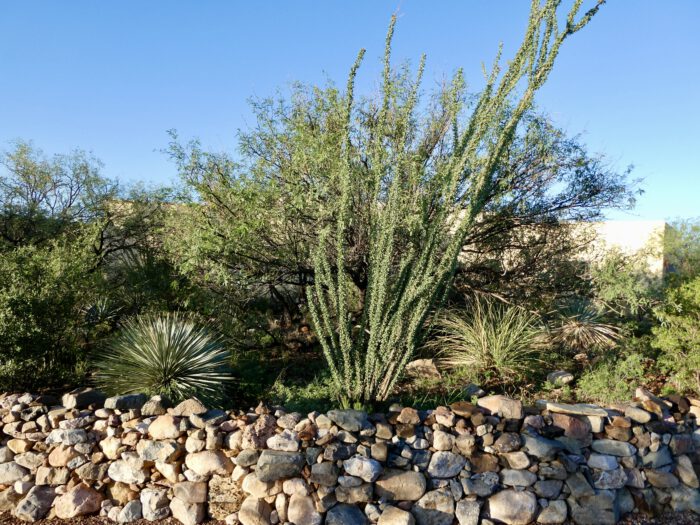
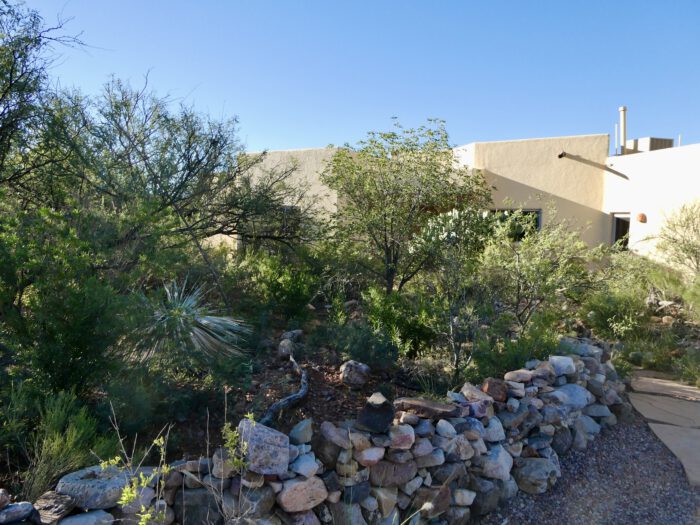
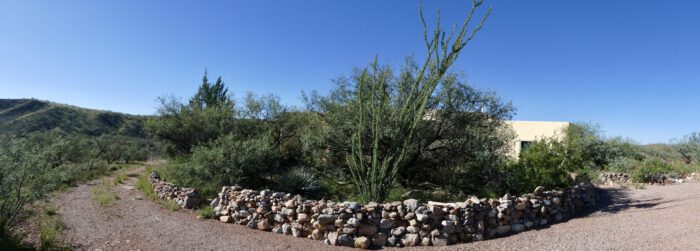
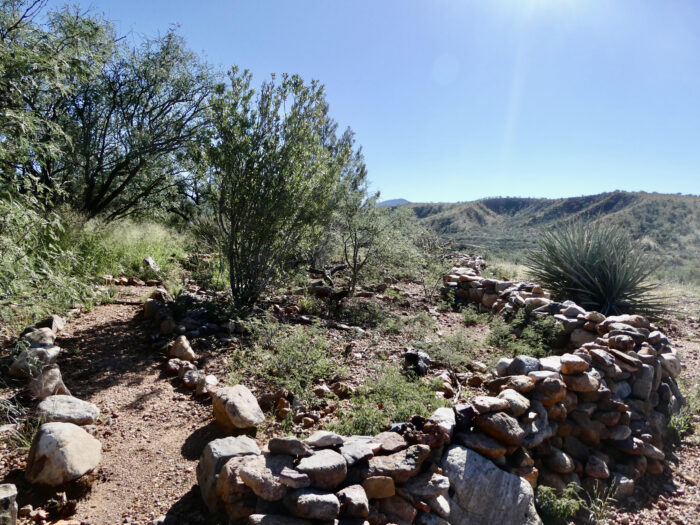
In addition to planting we also benefitted native species by constructing numerous rock walls that support wildlife, owing to the lack of mortar. Various lizard species in particular employ the walls for basking, hunting, and hiding. Greater Roadrunners in turn hunt their reptilian prey from these stone fortresses. In winter Rock Wrens forage along the them as well. The rock walls also serve as crucial windbreaks, helping to retain moisture for native plants. We lined all of the paths wandering around the house with rocks, and heavily rock-scaped the remainder of the habitat around the house. This has served to slow down and “plant” the water in the ground, in turn allowing native plants to flourish.
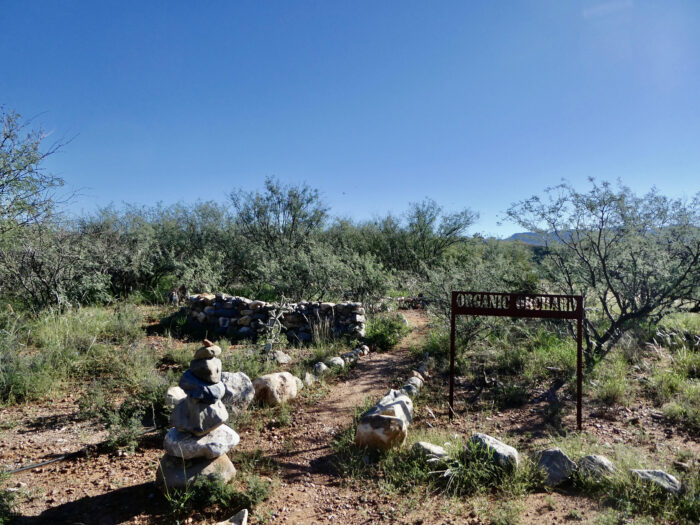
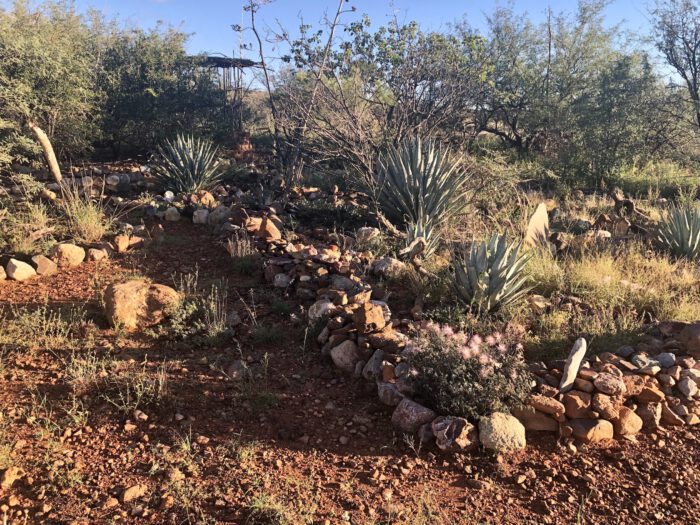
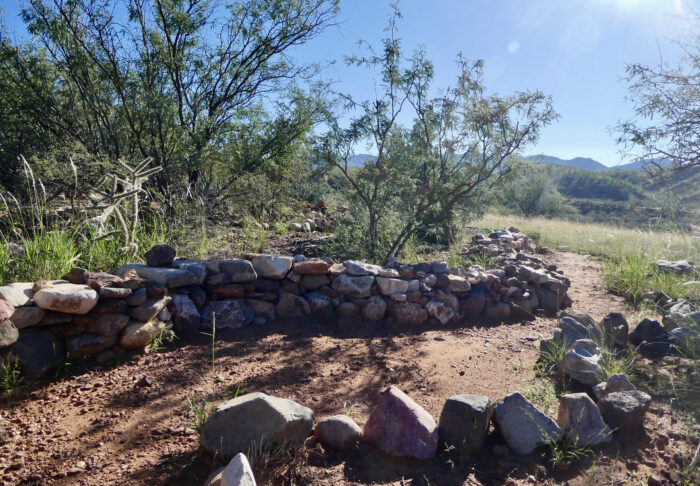
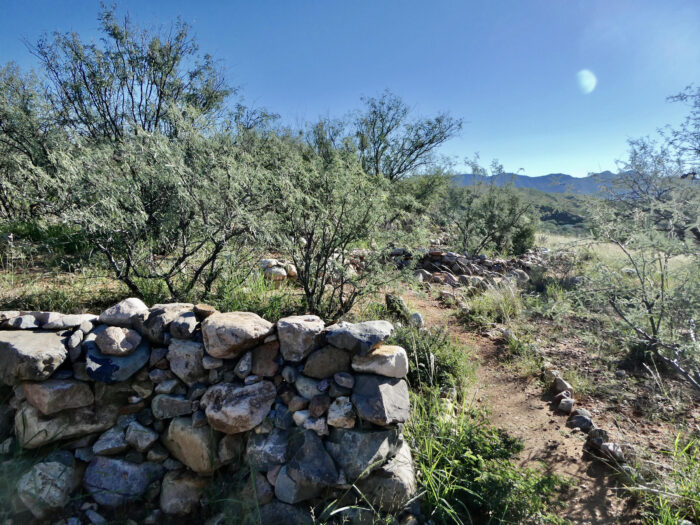
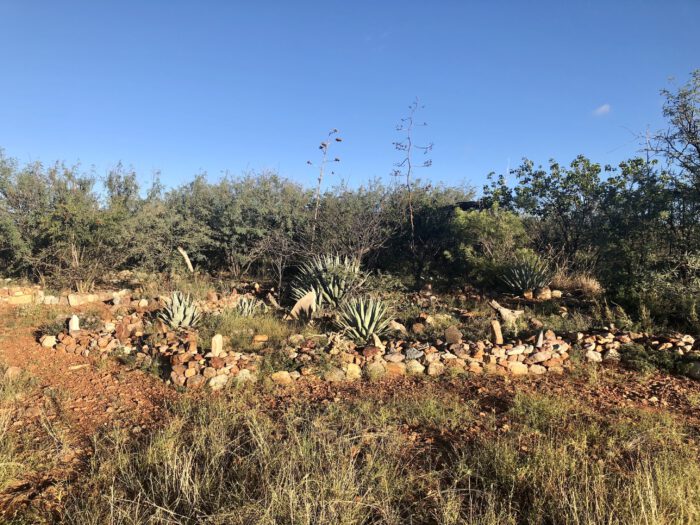
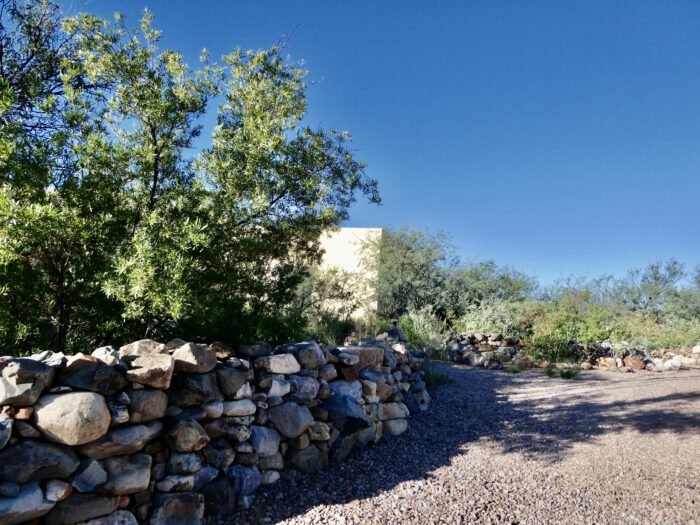
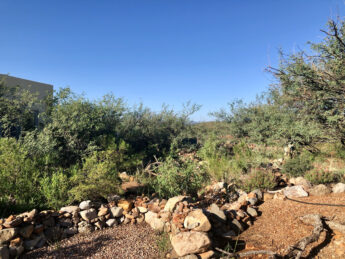
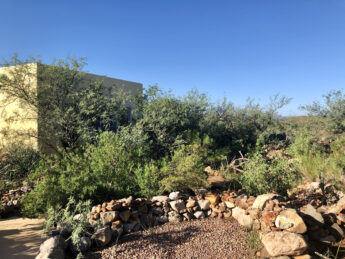
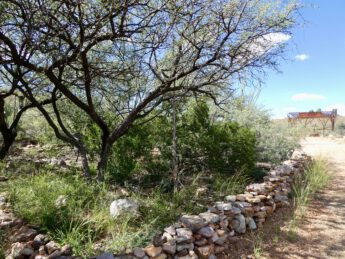
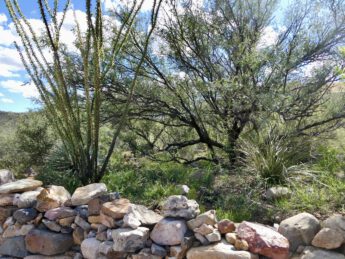
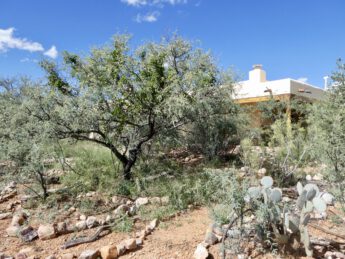
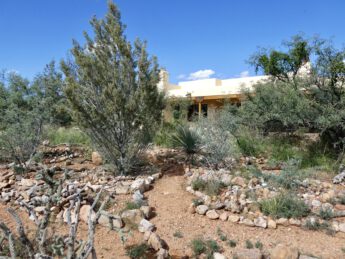
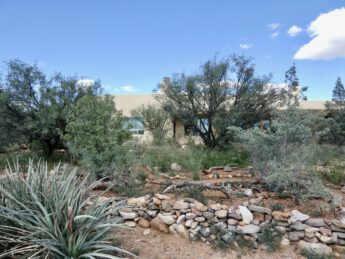
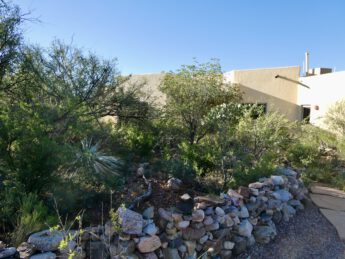
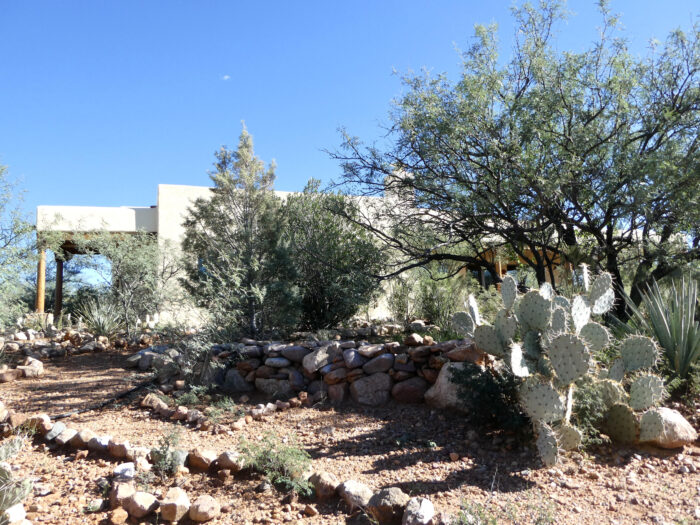
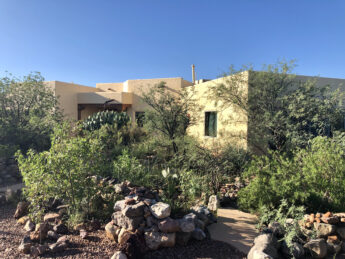
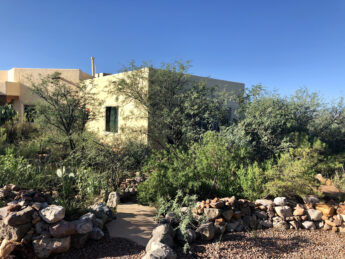
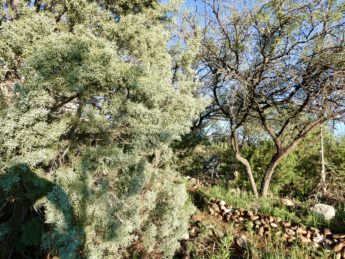
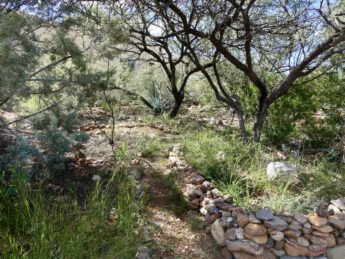
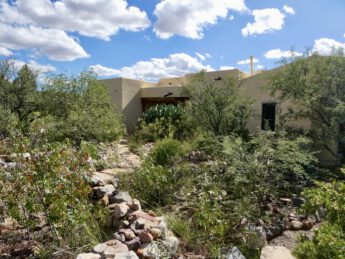
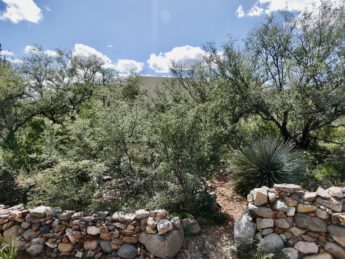
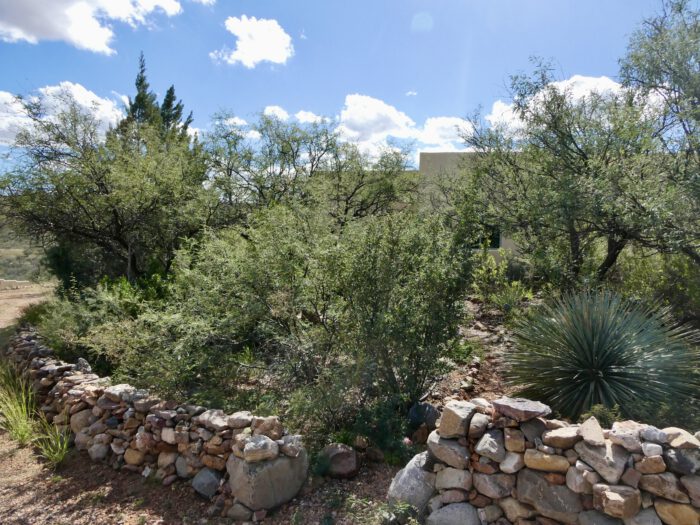

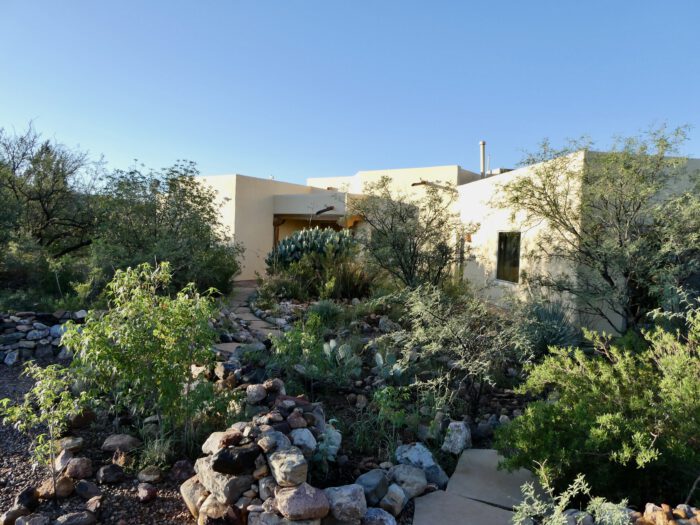
2008 – 2025 HOUSE IMPROVEMENTS

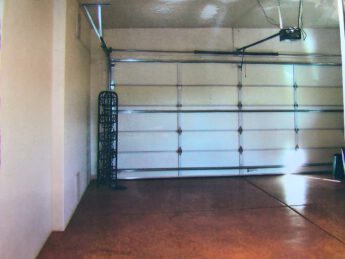
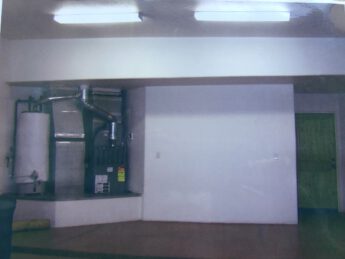
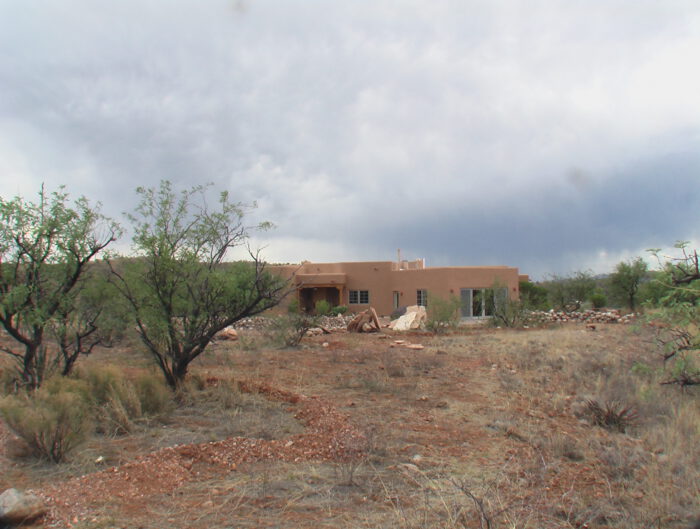
Upon arrival in March 2008, Claudia immediately designed the conversion of the spacious former double garage into their Nature Center. Claudia’s vision was to maximize the living space inside the house, while creating a truly welcoming and Nature-oriented room. Simultaneously, she increased the inside light by replacing the garage door with a set of gorgeous, custom-made glass sliding doors, also adding an additional glass side door. Vincent’s vision was to create a Bird Oasis with a Wildlife Pond on that same, prominent side of the house. He was hrilled to be able to “rescue” all the land that for years had been abused as a parking area and construction site. Together, Claudia and Vincent changed a dreary garage and the adjacent beaten-down land into a beautiful and inviting indoor/outdoor space.

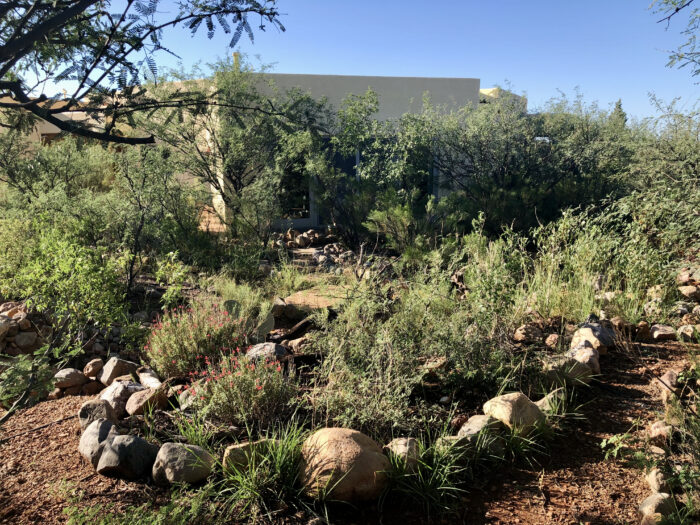
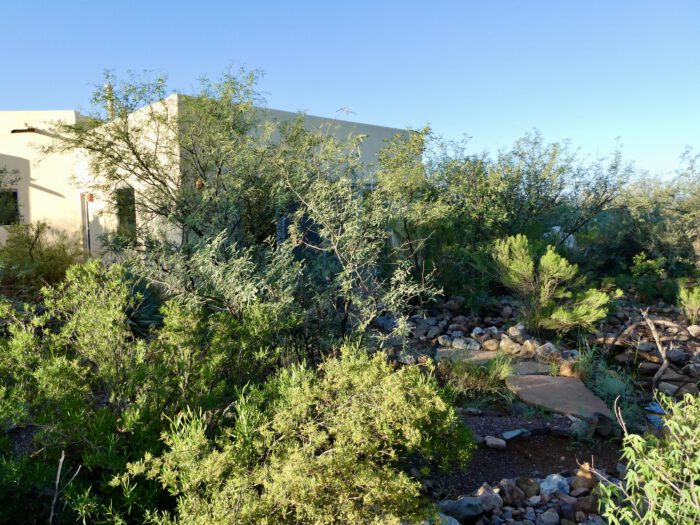
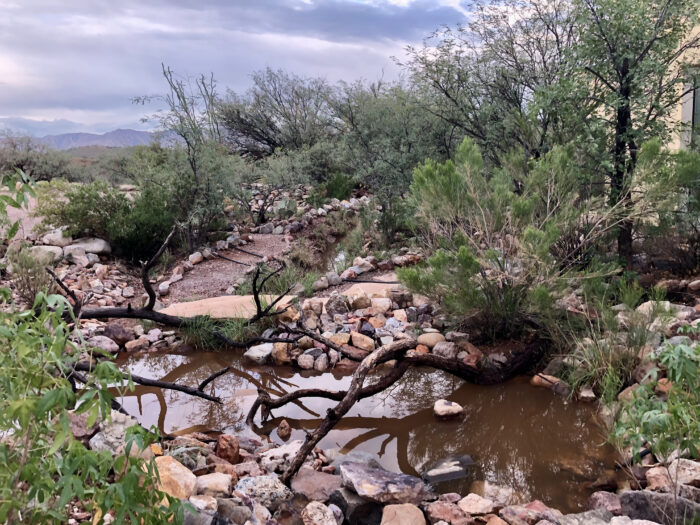
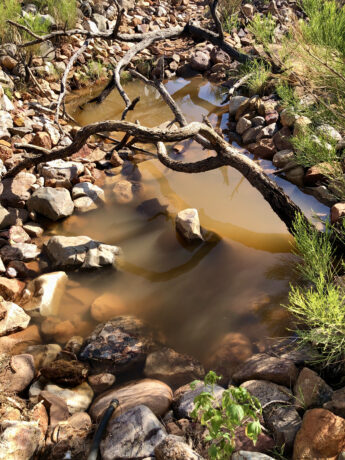
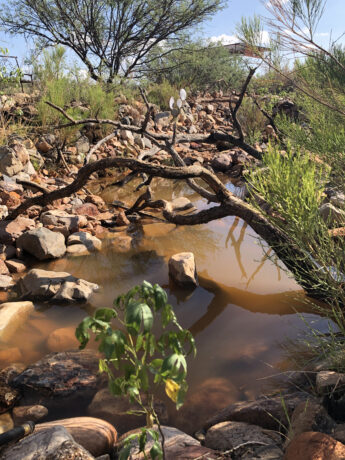
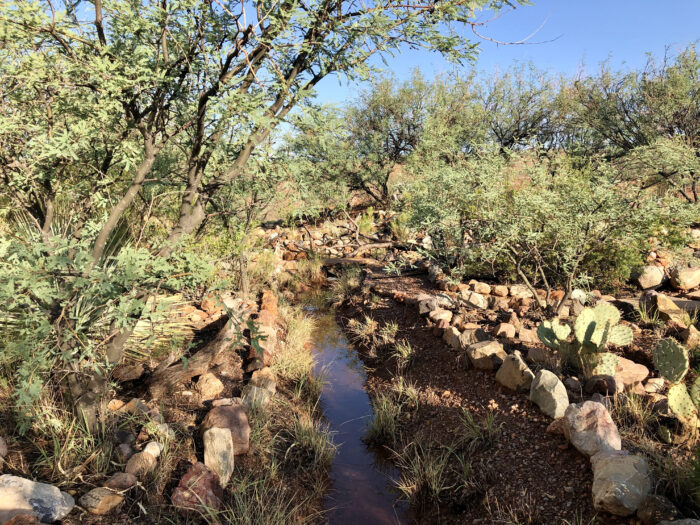
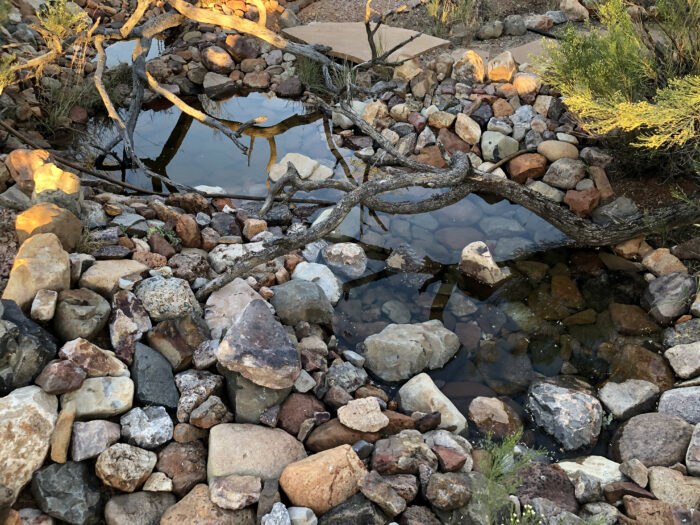
Upon arrival , two urgent improvement projects were immediately executed to help direct water away from the house. First, was the addition of a concrete apron all around the perimeter of the house, acting as a transition between the house and the clay soil, helping to direct water away from the structure. A key second move was adding long copper extensions to the very short scuppers that were originally installed. This was aimed at directing the water away from the stucco walls and more towards native plants. Simultaneously, Vincent strategically planted all the native species around the house to leverage the rainwater from all the scupper extensions. During the first Monsoon season the profound benefits of both seminal house projects were self-evident all around the home’s perimeter. Afterwards, the concrete Apron and all of the outside concrete floors on the porches were covered with gorgeous flagstone and local natural stone.

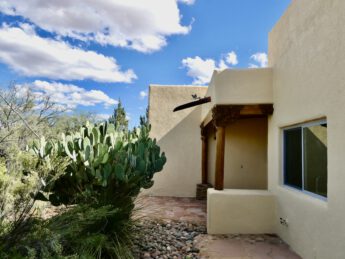
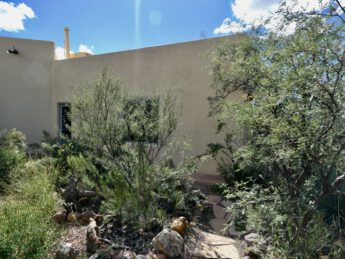
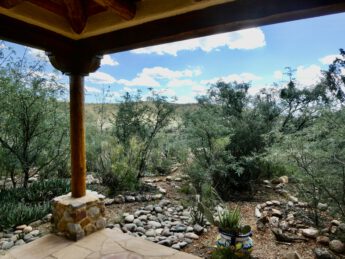
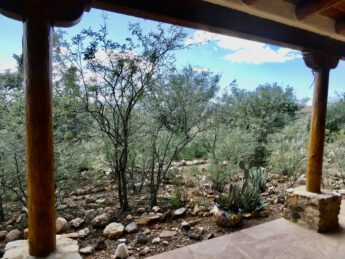
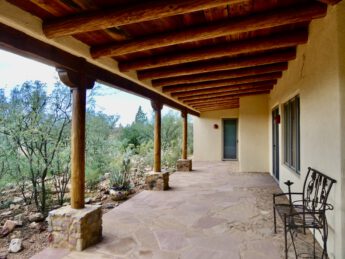
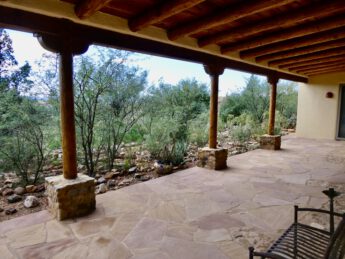
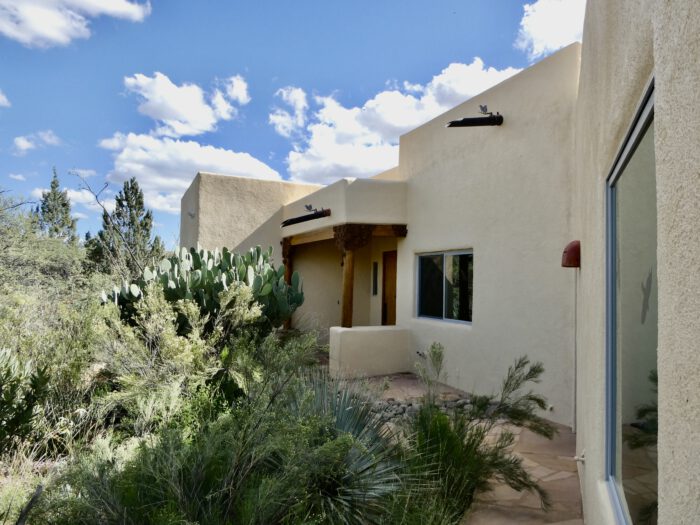
Painting the house with Elastomeric paint in a lighter color was another immediate accomplishment in an effort to help reduce the temperature inside the house. Upon their arrival in March 2008, they noted that very dark stucco color on the exterior greatly contributed to very high temperatures inside the house during sunny days even in March. Similarly, the roof was origianlly painted beige – something that Vincent soon made white to lower the inside house temperature.
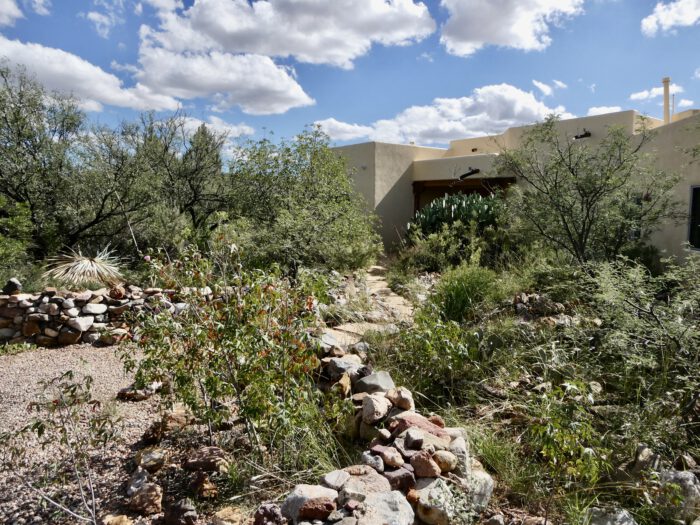
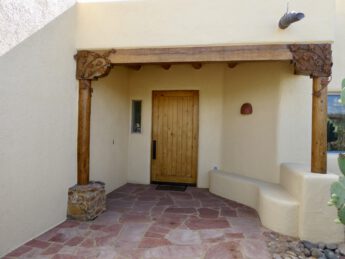
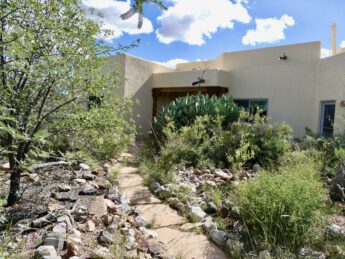
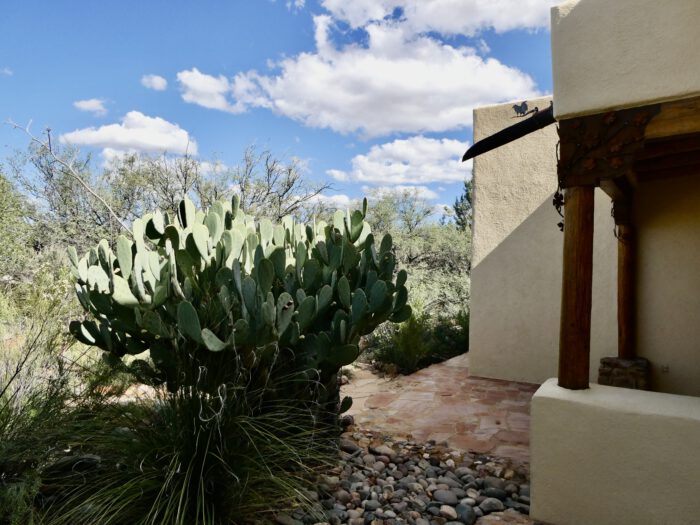
Despite the fact that upon their arrival this house lacked maintenance and proper care, Claudia and Vincent were attracted to it because it was constructed with RASTRA blocks – an Insulating Concrete Form (ICF) that is structurally strong, energy-efficient, sound absorbent, non-combustible, resistant to high wind, mold & pests and made from 85% recycled materials. Therefore, they both knew that all these house improvements were going to lead to NOT having to use the Central Air Conditioning throughout the house. Indeed, as all the plants continue to grow, the temperature inside the house drastically dropped and continued to remain pleasant year-round! Since 2008 the number of times that Vincent and Claudia have employed either the Air Conditioning or Heating is less than 20 times – almost exclusively to test the systems!
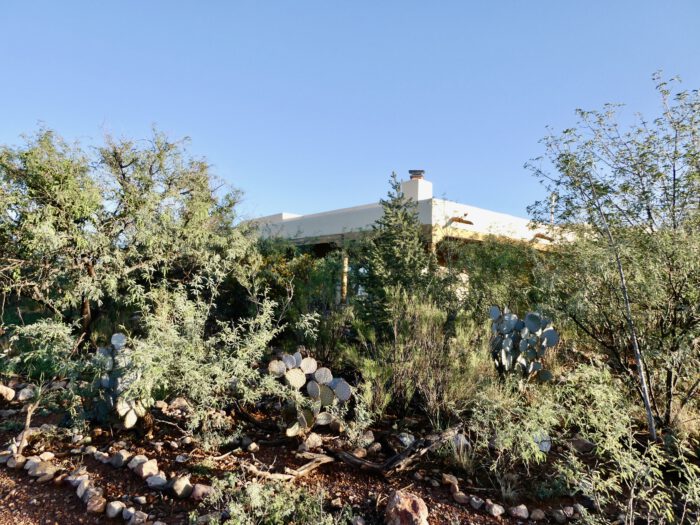
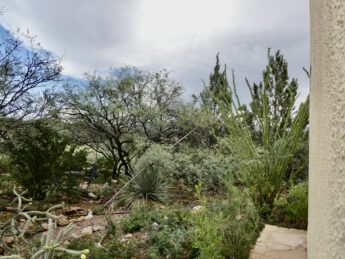
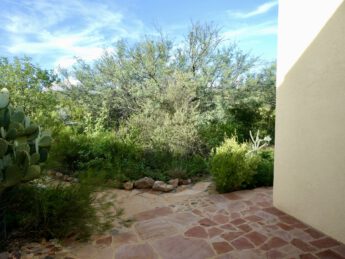
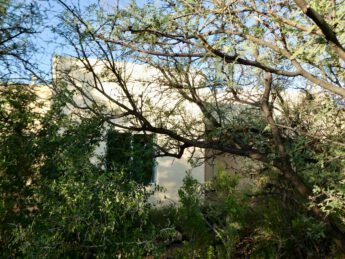
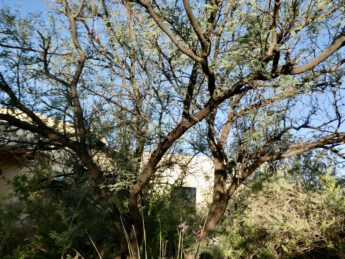
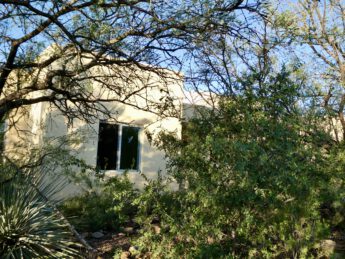
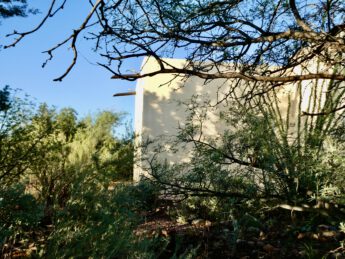
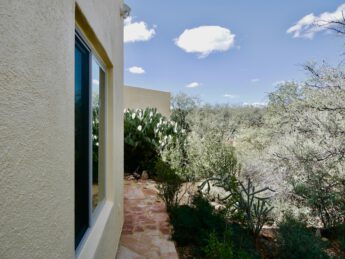


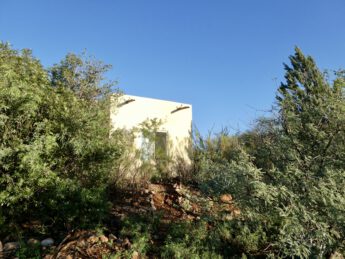
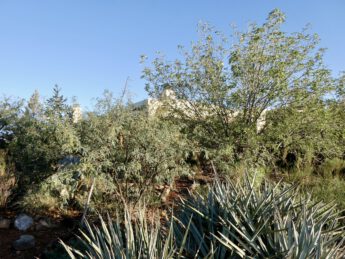
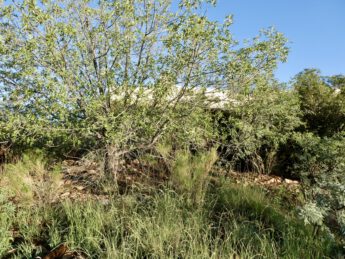
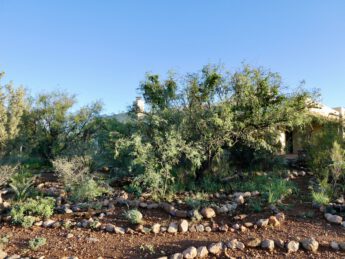
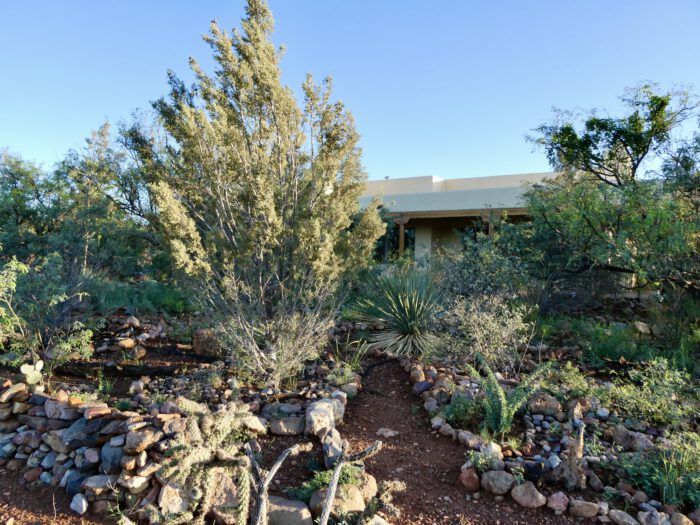
Claudia also led the renovation of the porches to replace the Viga posts and improve their design by building them over square rock pillars, protecting them from moisture over time. Later, the stucco around the house was also redone and the windows were upgraded to a Pella Energy Efficient series.
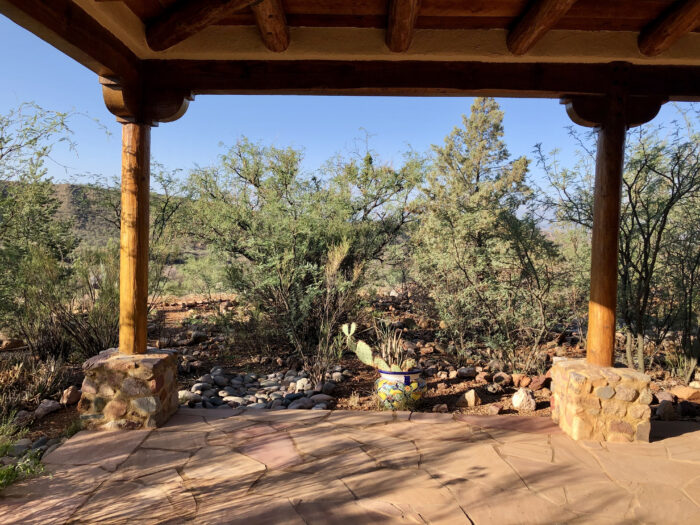
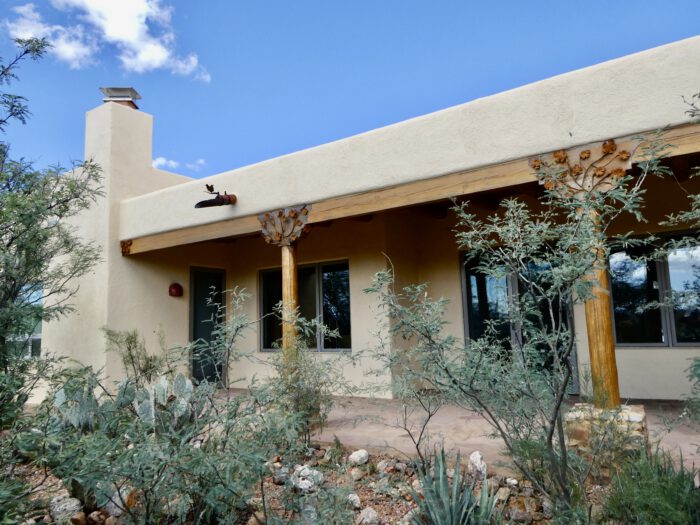
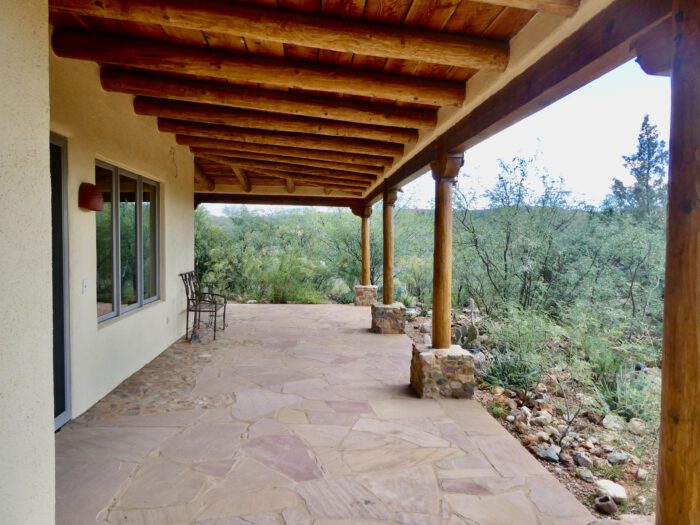
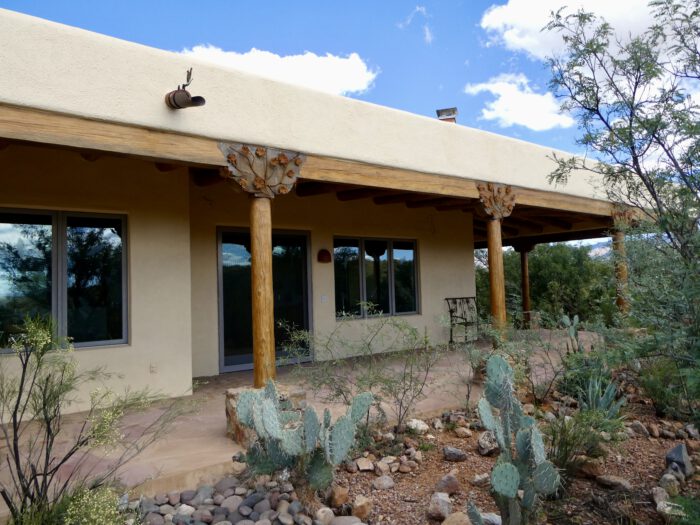
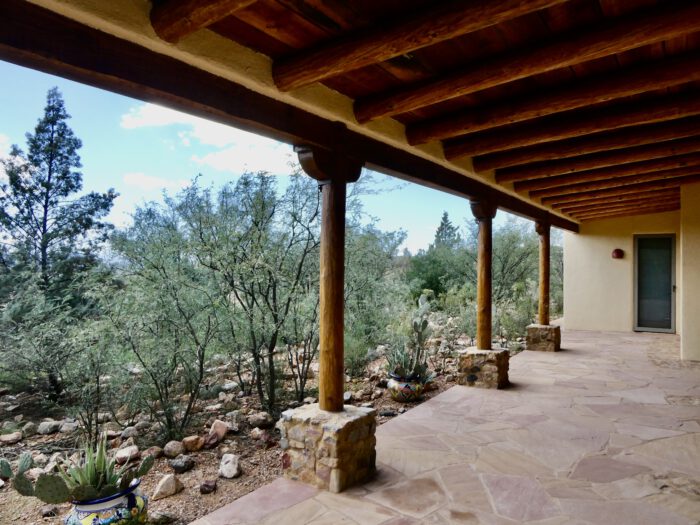
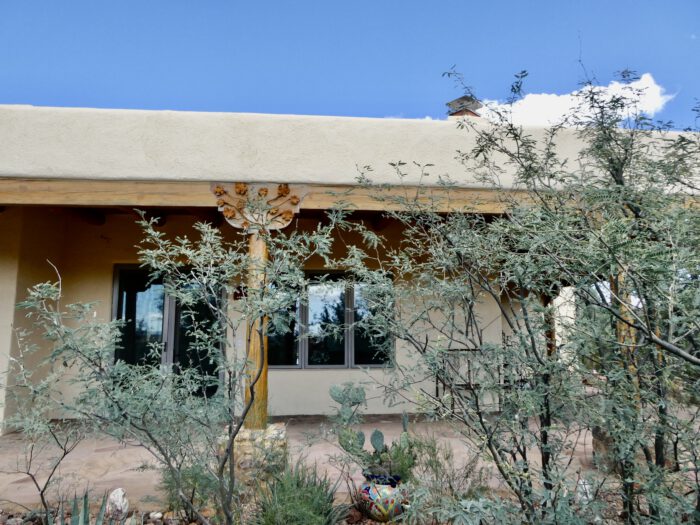
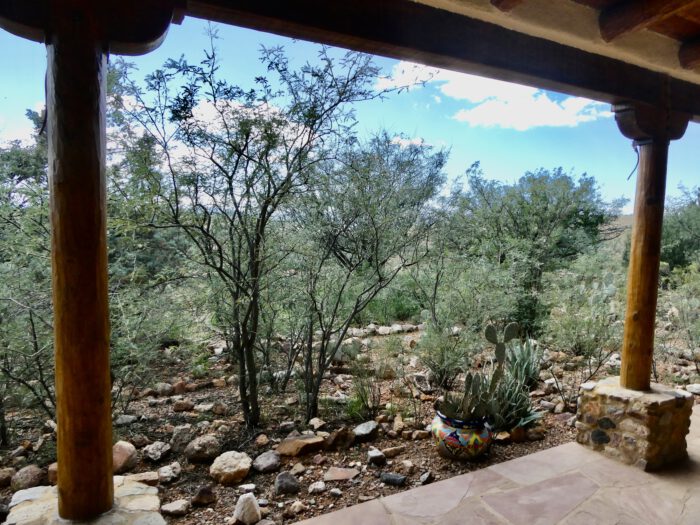
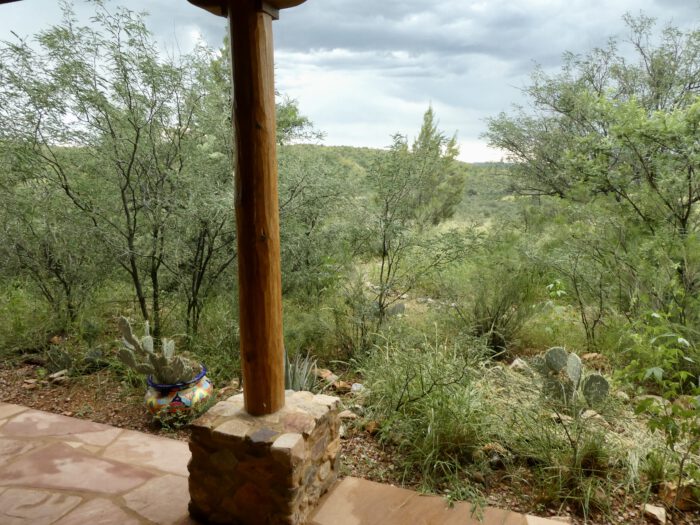
ENCHANTED FOREST
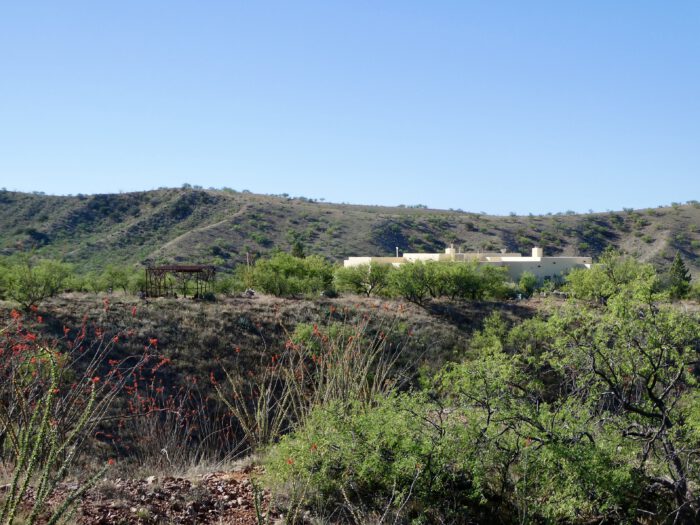
As the transformation of both the house and the natural landscape around it came to fruition, Claudia and Vincent wanted to add a creative and artistic complementary touch to the outside. Hence, the genesis of the Enchanted Forest came into being. Designed by them with Nature first and foremost in mind, this rustic space is variously suitable for outside parking or a captivating dining/lounging area with the addition of a table and chairs. Crafted by local welders with rustic metal and bedecked with various natural motifs, the Enchanted Forest evokes the very biodiversity of the Sky Islands. Vincent and Claudia have frequently observed Greater Roadrunners, raptors, and other birds hunting from the countless perches on this special structure.
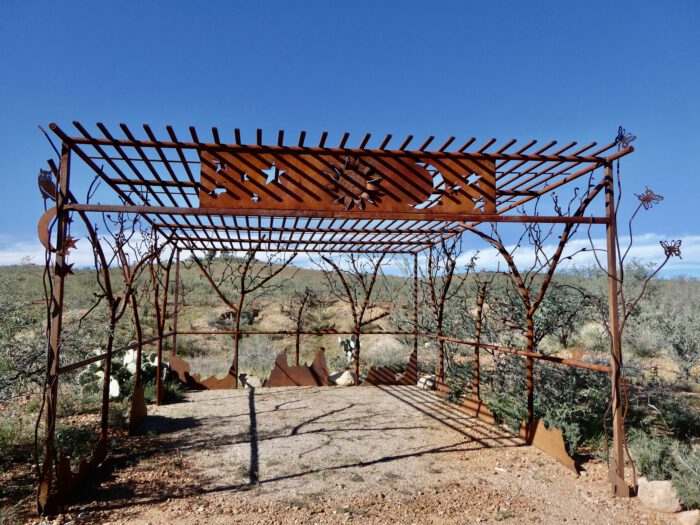
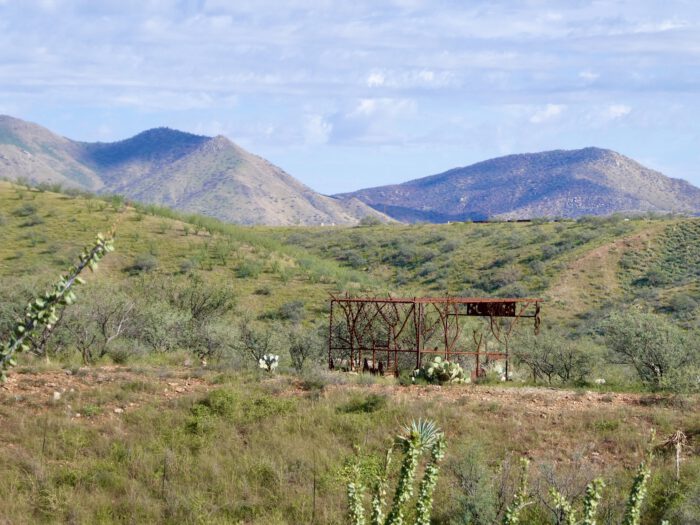
LIZARD LABERINTH
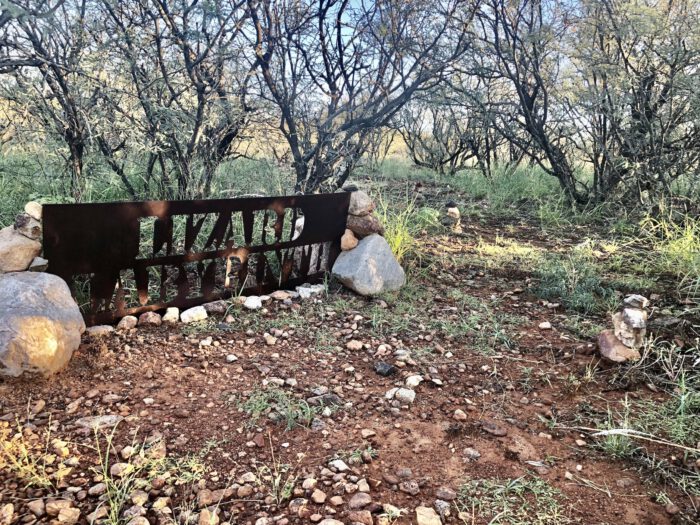
Another special outdoor space that Claudia and Vincent created was a series of intertwining paths, weaving their way through a Dwarf Woodland. Abutting their Organic Orchard and Organic Edible Raised Beds, Lizard Labyrinth entices walkers to slow down, breathe deeply, and take note of the small pleasures of Nature. The series of small, staked rocks along the trails speak to seeking inner balance within the scope of the natural world.
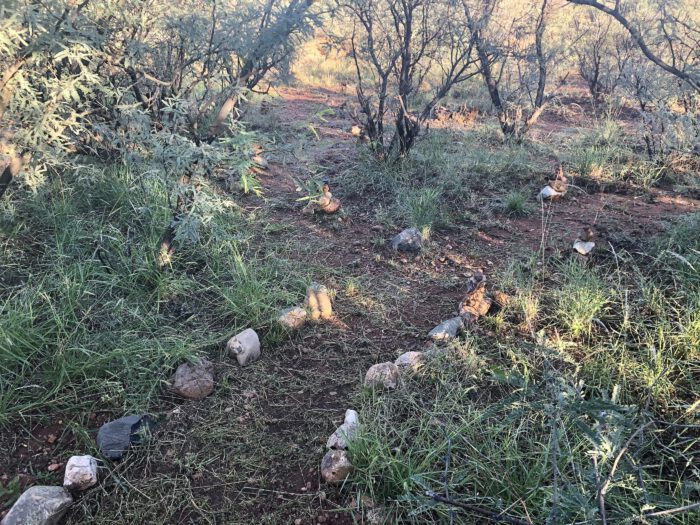
AMAZING BIODIVERSITY
Despite the daunting beginnings in 2008, the tide soon turned towards the native plants and, as of 2025, we can proudly celebrate a resounding success in terms of native landscaping and hence biodiversity around our home. Where there was once predominantly bare dirt, there is now a diverse woodland! Attracted by Vincent’s ecological restoration efforts, the return of wildlife by the house has been nothing short of spectacular. From our home we have admired many memorable species, including: Bobcat, Mountain Lion, Gray Fox, Coyote, Striped Skunk, Spotted Skunk, Hooded Skunk, Collared Peccary, Gray Hawk, Golden Eagle, Zone-tailed Hawk, Gambel’s Quail, Elegant Trogon, Violet-crowned Hummingbird, Varied Bunting, Gila Monster, Black-tailed Rattlesnake, Madrean Alligator Lizard, Sonoran Desert Toad, Black Witch moths…and countless other species, both large and small.
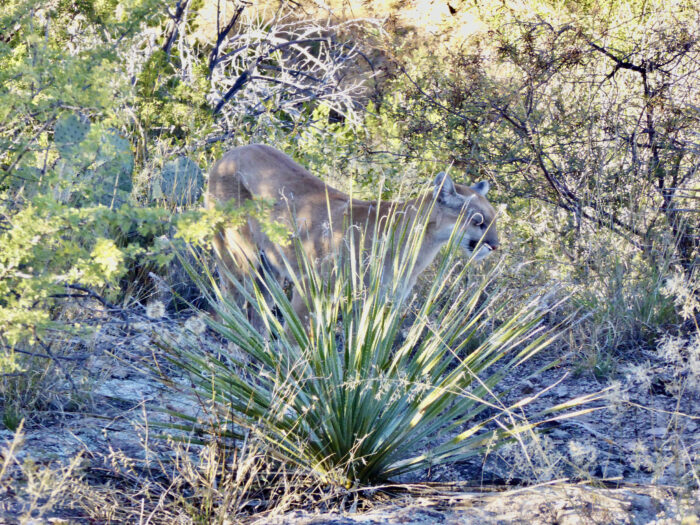
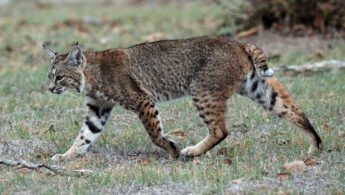
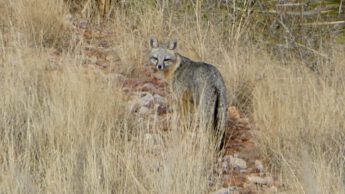
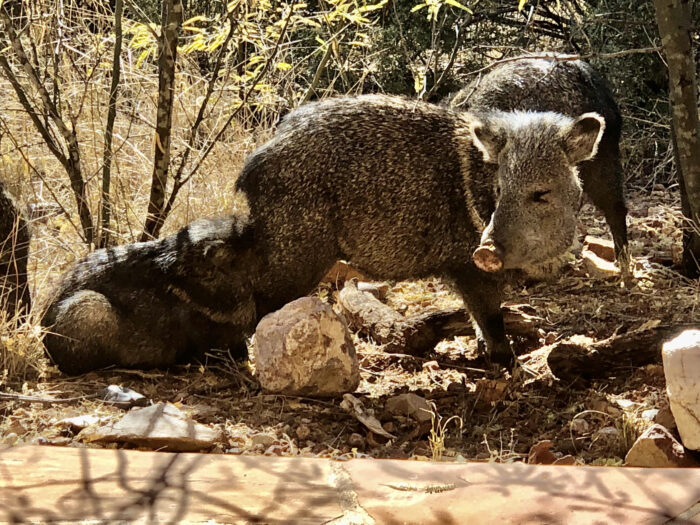
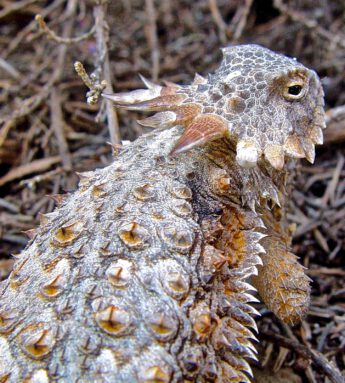

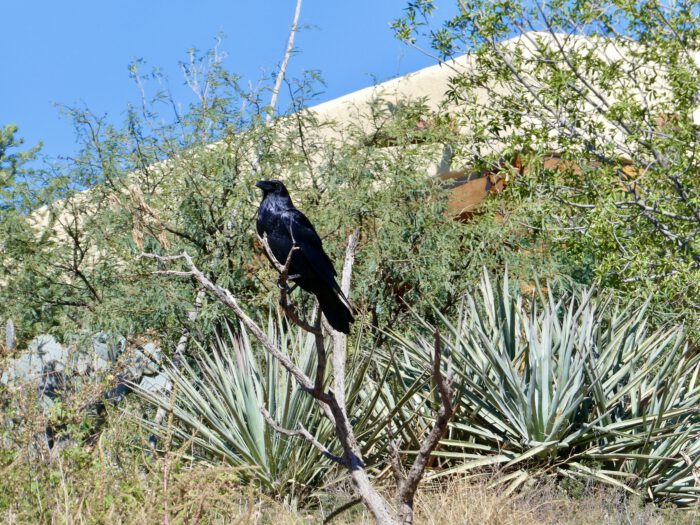

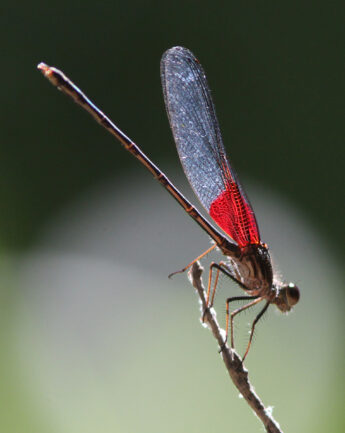
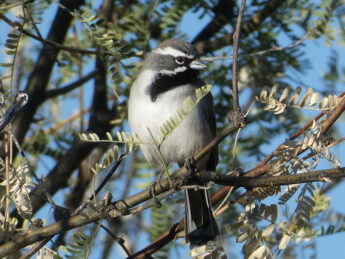
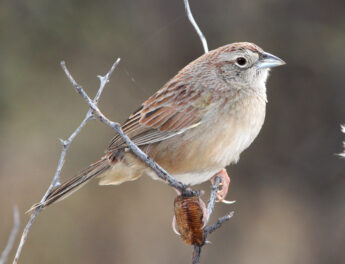
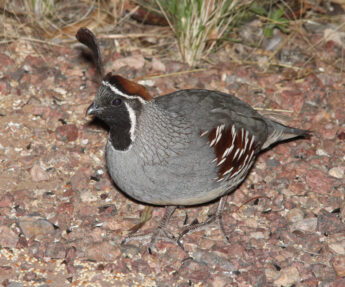
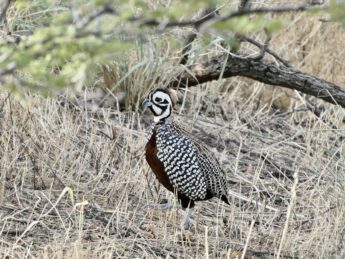
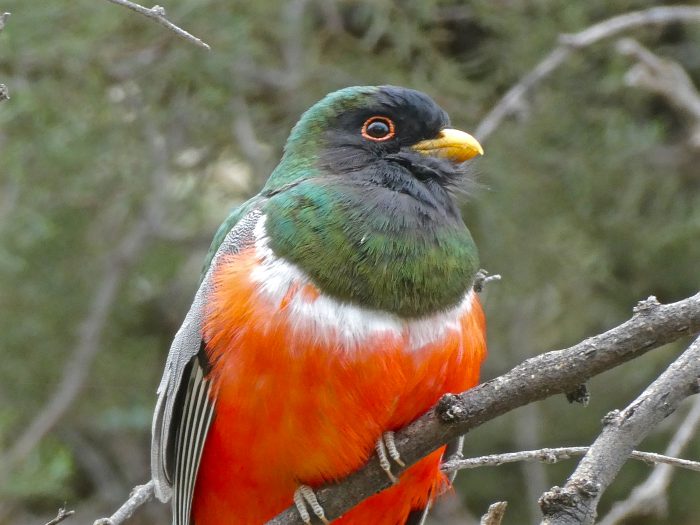
Among our most vivid wildlife memories was watching a herd of 8 Collared Peccaries foraging near one of the porches. Among them were a mother and her nursing twins – mere feet outside our door! When wildlife start to raise their young on your literal doorstep, you truly know that your conservation efforts have paid off. Likewise, we have observed White-tailed Deer fawns, Quail chicks, tadpoles in our Wildlife Ponds, and evidence of many other species reproducing at Raven’s Nest Nature Sanctuary. In a day and age of extinctions and habitat destruction, it fills the soul and is supremely satisfying to be able to truly help the biodiversity – life itself – in an area so globally important as the Sky Islands of Arizona.
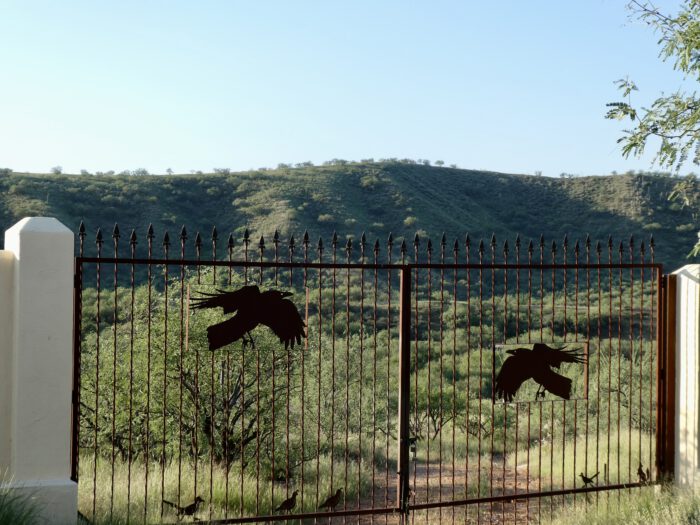

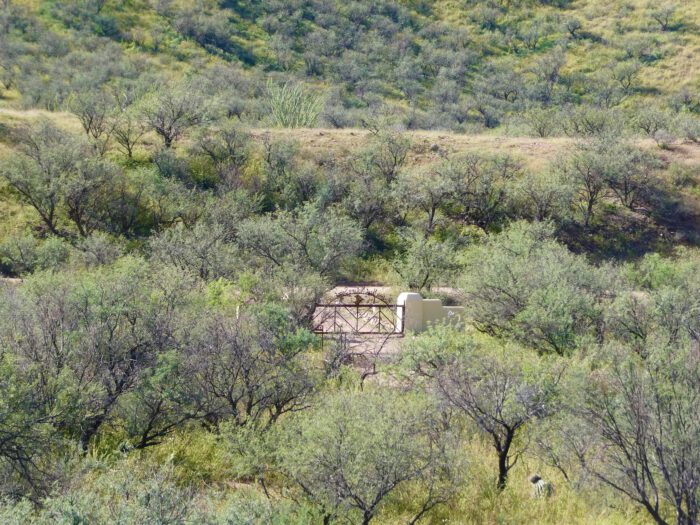
All told, the breath taking transformation brought to the house and the land by Claudia and Vincent have worked magic. Anyone walking through and experiencing these spaces immeadietely experiences the love and dedication, the thoughtfulness and love, poured into the Nature Sanctuary.

